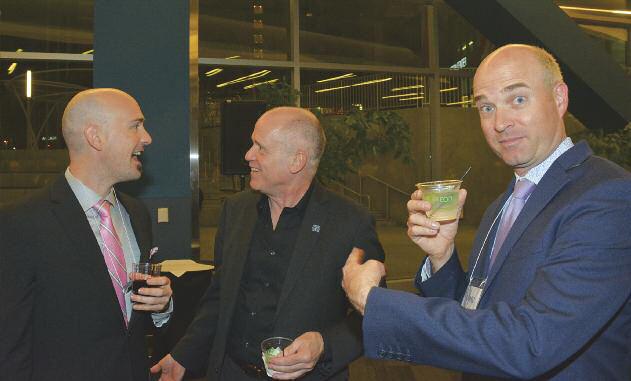







































POSTMASTER CMEA Magazine (ISSN 1099–6710) is published quarterly (Fall, Winter, Spring, Summer) by CMEA.
Mailing Address: 9923 Hirondelle Lane, Tujunga, CA 91042–2605. Periodical postage paid at Tujunga, CA and at additional mailing offices.
Subscription price of $4.00 is included in the CMEA annual dues. Non-member subscription rate is $12.00 per year. Single copies are $3.00
POSTMASTER: Send address changes to CMEA Magazine, 9923 Hirondelle Lane, Tujunga, CA 91042–2605
CMEA Magazine
Art Director/Business Manager: Allen Petrinka
Mailing Address: 9923 Hirondelle Lane Tujunga, CA 91042–2605
Voice: 818 353–3356
E-mail: cmeamagazine@dslextreme.com
Rates and advertising information available at: www.calmusiced.com
The Executive Board of CMEA serves as the Editorial Committee. The observations and opinions expressed in any article in this magazine are those of the author and do not necessarily represent the official position of the Association. CMEA does not necessarily endorse any product or service advertised in this magazine.
CMEA Administrative Office Mailing Address: 2417 North 11th Avenue Hanford, CA 93230
Office: 559 587–2632 Cell: 559 904–2002
E-mail: cmea@calmusiced.com Website: www.calmusiced.com

• President’s Message: CMEA’s Vision byCMEA President John Burn3
• Highlights of Tri-M Growth in California by Troy Trimble, CMEA Tri-M Representative9
• Prelude to Springtime by Michael Phenicie, CMEA Northern Section President 10
• Empowering Educators To Inspire All Students Through Music Education by Bill Wilkinson, CMEA Central Section President11
• Greetings from the Southeastern Section by Ryan Duckworth, CMEA Southeastern Section President12
• CMEA-SBS Hosts First High School Honor Orchestra Concert in San Diego by Karen Childress-Evans, Ed. D., CMEA Southern Border Section President13
• All-State Elementary Music Ensembles? In Florida the Future is Now by Richard Lawton, CMEA General Music Representative17
• Providing Opportunities to Compose by Dr. Lisa A. Crawford, CMEA Creating and Composition Representative19
• Higher Education Happenings by Dr. Lawrence F. Stoffel23
• CMEA State Choral Festival 2018 Wrap-Up by Nancy Ludwig, CMEA State Choral Festival Coordinator25
• Announcing the 2019 CMEA State Band and Orchestra Festival by Keith Johnson, CMEA State Band & Orchestra Festival Coordinator27
• 2018 Stand Up 4 Music Advocacy Day by Jeremiah Jacks, CMEA SU4M Performance Day Coordinator28
• CMEA State Award Winners The CMEA Gala Awards Banquet and CASMEC People29
Fifty years ago, African-Americans Tommie Smith, gold medalist in the 200-meter
Olympics, and bronze medalist John Carlos raised a fist in a planned protest during
the campus of San José State University recreates that event. The twenty-two-foot
and was created by artist Rigo 23. The plaque at the base of the
reads: At the México CIty 1968 Olympic Games,San José State University Student-Athletes Tommie Smith and John Carlos Stood for Justice, Dignity, Equality and Peace. Hereby the University and Associated Students Commemorate Their Legacy. October 16, 2005
World Projects24














“The Yamaha Silent Electric Violin rocks. I have used it for 15 years and it keeps getting better. It’s the only electr violin that sounds great clean and still has the flexibili to be processed for use with multiple effects.”










Renowned Jazz Violinist/Composer








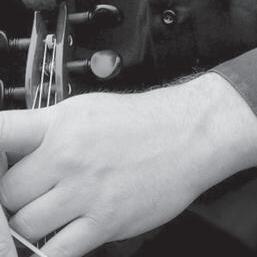




















by John Burn CMEAPresident
eep Calm and ensure all California students have equal access to a high quality music education. CMEA’s vision is to ensure access to high quality music education for all California students. How do we move ever forward to increase access and to insure quality music education everywhere in our state? Be keeping “CALM.” CMEA’s strategic plan has four pillars to advance us toward realizing our vision: Communication, Advocacy, Leadership, and Membership services. Under Scott Hedgecock’s leadership, the strategic plan was updated through Scott’s “IDEA” lens, where IDEA stands for Inclusion, Diversity, Equity and Access. As I begin my term as your CMEA president, I look forward to the challenge of facilitating us all as we advance towards our vision. This article explains for each pillar, what our goals are, who are our partners in each pillar, and what meetings, events and festivals are included in each pillar. Keep CALM and read on.
Our new CMEA Vice-President, Anne Fennell, is our communication lead. Our communication goal is to provide clear, accurate, timely information via: email, the CMEA Magazine, the CMEA website, the Stand Up 4 Music website, Facebook, Twitter, and other social media. Our CMEA Magazine editor, Allen Petrinka, and our public relations rep, Mario Sebastian, play vital communication roles. Our goal is clear communication with and between CMEA members and our many California music education partners such as: NAfME, the National Association for Music Education• AOSA, the American Orff-Schulwerk Association’s six California chapte
CAJ, the California Alliance for Jazz• Cal ASTA, the California Chapter of the American String Teachers Associatio
CBDA, the California Band Directors Association• CCDA, the California Choral Directors Association• CODA, the California Orchestra Directors Association• NCBA, the Northern California Band Association• NCBCDA, the Northern California Band and Choral Directors Association• OAKE, Organization of American Kodály Educators’ two California chapters• SCSBOA, the Southern California Band and Orchestra Association• SCVA, the Southern California Vocal Association•
CMEA EXECUTIVE BOARD
CMEA President John Burn jburn@calmusiced.com 408 522-2541
CMEA President-Elect Armalyn De La O adelao@calmusiced.com 909 838-3716
CMEA Vice President Anne Fennell afennell@calmusiced.com
CMEA Secretary
Sandra Lewis slewis@calmusiced.com 408 806-5550
CMEA Immediate Past President
Scott Hedgecock shedgecock@calmusiced.com 714 626-3984
CMEA OFFICE
cmea@calmusiced.com 2417 North 11th Avenue Hanford, CA 93230 559 587-2632
CMEA Executive Administrator Trish Adams cmea@calmusiced.com 559 904-2002
CMEA Administrative Assistant Heather Adams hadams@calmusiced.com 559 410-2425
CMEA Legislative Advocate Lynne Faulks consultLF@gmail.com
SECTION PRESIDENTS
CMEA Bay Section President Rita Zigas-Brown rzigas.brown@gmail.com 925 944-6840 x8622
CMEA Capitol Section President Joshua Luedtke Jluedtke86@hotmail.com 916 214-5674
CMEA Central Section President Bill Wilkinson bwilkinsoncmea@gmail.com 559 816-6141
CMEA Central Coast Section President Christy Latham clatham@sccs.net
CMEA North Coast Section President Holly MacDonell hollymacdonell@gmail.com 707 499-1399
CMEA Northern Section President Michael Phenicie phenicie@frontiernet.net 530 458-2156
CMEA Southeastern Section President Ryan Duckworth Ryan_Duckworth@cjusd.net 909 856-5777
CMEA Southern Border Section President Laura Smith lsmith11@sandi.net 619 246-0092
CMEA Southwestern Section President Dr. Alexander Koops akoops@apu.edu 626 815-6000 x3583
NAfME OFFICERS
NAfME President Denese Odegaard 1806 Robert Fulton Drive Reston, VA 22091 800 336-3768
NAfME Western Division President Russ Sperling sperlingruss@gmail.com
COUNCIL OF REPRESENTATIVES
CMEA CAJ Representative Barbara Shinaver barbshinaver@gmail.com 559 451-4320
CMEA CASMEC Coordinator/CMEA Representative on the CBDA Board Joseph Cargill cargill.joseph@gmail.com 559 474-3064
CMEA CBDA Representative Phil Vallejo philvallejo@gmail.com
CMEA/CCDA Representative Dr. Rob Istad robert.istad@gmail.com 562 822-5952
CMEA/CCDA Choral Leadership Academy Coordinator Willow Manspeaker wmanspeaker@stevensonschool.org 831 625-8339
CMEA CODA Representative Bill Harrington billharrington@sbcglobal.net 510 507-9738
CMEA Advocacy Day Performance Coordinator Jeremiah Jacks jeromejacks30@gmail.com 530 417-7021
CMEA Public Relations Coordinator Mario Sebastian msebasti@egusd.net
CMEA Advocacy Representative Russ Sperling sperlingruss@gmail.com
CMEA Collegiate Council Chairperson Riley Pate rileyelizabethpate@gmail.com 951 205-1805
CMEA Collegiate Representative Dr. Dennis Siebenaler dsiebenaler@fullerton.edu 657 278-3510
CMEA Creating and Composition Representative Dr. Lisa A.Crawford lisacrawfordmusic@gmail.com 310 863-6422
CMEA CTA Liaison James Benanti jamesbenanti77@gmail.com
CMEA Elementary Representative Coralie Prince coralie.prince@gmail.com
CMEA General Music Representative To be filled
CMEA Innovations Representative Danielle Collins danielle@pulsepercussion.org 909 214-8527
CMEA Membership Chairperson Ryan Clippinger Ryan_Clippinger@kernhigh.org 661 854-5561 x70701
CMEA Mentorship Program Chairperson Mark Nicholson mnicholson@sandi.net 858 256-2702
CMEA Music Supervisors Representative Michael Stone meuph@att.net 661 319-8218
CMEA Music Technology Representative Chad Zullinger chad.zullinger@gmail.com 925 817-7757
CMEA Higher Education and Research Representative Dr. Ruth Brittin rbrittin@pacific.edu 209 946-2408
CMEA Retired Members Representative James Mazzaferro jmazz1@surewest.net 916 690-1992
CMEA Special Learners Representative Angela Holmes Holmesangie@yahoo.com
CMEA State Band and Orchestra Festival Coordinator Keith Johnson keith@echsbands.com 510 231-1437 x26418
CMEA State Choral Festival Coordinator Nancy Ludwig nancyludwig6@gmail.com 626 443-6181 x5895
CMEA State Solo and Ensemble Festival Coordinator Cheryl Yee Glass cglass@srvhs.org 925 552-3044
CMEA Tri-M Representative Troy Trimble troyatrimble@gmail.com 714 626-3975
CMEA Urban/Rural Schools Representative Stacy Harris sharris1@ggusd.us 714 663-6363
CMEA World Music Representative Dr. Lily Chen-Hafteck lhafteck@ucla.edu 310 825-4668
Our Immediate Past-president, Scott Hedgecock is our Advocacy Lead. Our advocacy goals are:
Educate the public of the importance of1 our vision.
Strengthen music in all schools.2
Advocate our vision at the National, State,3 and Local level.
To achieve these goals, we have our own lobbyist. We have an advocacy team consisting of: our lobbyist, the immediate past-president, the president, the president-elect and our CMEA council advocacy representative that has weekly conference calls.
Each May, we put on Stand Up 4 Music Day in Sacramento, where CMEA board members join with our Stand Up 4 Music Coalition as we have meetings with California legislators and their staffers in the Capitol building, while on the Capitol steps we celebrate and enjoy a wide variety of high quality student musicians and hold a noontime press conference.
We have developed a strong partnership with the CETA, the California Educational Theater Association, CDEA, the California Dance Education Association, and CAEA, the California Art Education Association. Together we are the Four Arts Education Organizations, or 4AEO. We have monthly Zoom video-conference meetings centered on our shared advocacy interests.
We facilitate the annual meeting of the Stand Up 4 Music Coalition at the NAMM (National Association of Music Merchants) show where over a dozen of our partner organizations meet to build consensus and prioritize our discussion points for Stand Up 4 Music Day.
We have also made significant and important partnerships with the CTA, the California Teachers Association and the California PTA (Parent Teachers Association). We are a vocal seat at the table of CAAE, the California Alliance for Arts Education, and communicate regularly with CreateCA, another association that wishes to advance arts education in our schools.
Another important organization to know about is CMEF, the California Music Education Foundation. The board of this organization is the same as the CMEA Executive Board. While CMEA is a 501(c)(6), CMEF is a 501(c)(3) nonprofit, and as such is able to accept tax de-
ductible donations which can then be used for scholarships and so forth.
Leadership
As CMEA president, I will be the leadership lead. Our leadership goals are: Strengthen board effectiveness.1
Strengthen relationships with our2 partners.
Maintain financial stability through3 increasing conference attendance, membership, and corporate sponsorships. We work with our parent organization, NAfME, by attending Hill Day and the National Assembly in Washington, D.C., and we work with the western division of NAfME (which is comprised of representatives from Arizona, California, Nevada, Utah, Hawaii, and India). (Yes, you read that correctly: NAfME recently accepted WMEA, the Western Music Education Association, from India. This growing association of music educators from India are excited to join NAfME as they work to improve and increase the education of Western art music and popular music across their vibrant country.)
Specifically, we work with NAfME Western Division to put on the Western Division Leadership Seminar held each June, where current and newly elected/appointed leaders from CMEA’s sections, and from our many partners, along with emerging music education leaders from across the country, meet to strengthen leadership skills.
Developing future music education leaders is also a priority, so we work closely with our collegiate rep, our collegiate student representatives and our Tri-M programs across the state.
As CMEA president, I will also be CMEA’s CASMEC lead. CASMEC, the California All-State Music Education Conference, is a huge collaborative event where the culture of community and membership value are tangible. The CMEA Board and our CMEA CASMEC coordinator work closely with leadership from CAJ, CBDA, CCDA, and CODA to put on a conference that showcases exemplary student work and has a variety of sessions and concerts to meet the professional development needs of every California music educator. One highlight of the conference is the CMEA Awards Gala, where we celebrate the incredible work of accomplished music educators from across the state.
In order to solidify a long-term vision for CASMEC and with hope to improve
the communication and decision-making structure of the conference, leaders from CAJ, CBDA, CCDA, CODA and CMEA are meeting with a professional facilitator for a two-day CASMEC Vision Retreat in June.
Our president-elect, Armalyn De La O, is our membership services lead. Our membership services goals are: Develop a culture of community.1
Continue and grow our mentorship pro-2 gram.
Increase and better communicate member-3 ship value.
The CMEA State Council insures that every aspect of music education in California is represented. We have representatives for: jazz, band, choral, orchestra, creating and composition, elementary, general, higher education, research, innovations, membership, mentorship, music supervisors, music technology, retired members, special learners, urban and rural schools, and world music. These hard-working leaders insure quality sessions at CASMEC, contribute articles to CMEA Magazine, and put on some fantastic state events. These state events include two CMEA State Solo/Ensemble Festivals, one in Northern California, and one in Southern California, the CMEA State Choral Festival held in the beautiful Musco Center at Chapman University in Orange, and the CMEA State Band and Orchestra Festival to be held in the amazing Weill Hall at Sonoma State University. Another event is JAM (Just Add Music), a one day training for general education elementary teachers to include standardsbased music lessons, which we are moving from happening at CASMEC to instead happen at CTA and California PTA conferences. We are also very excited about our partnership with NAfME Western Division in putting on the Casting a Wider Net Conference at Asuza Pacific University where innovative and inclusive approaches to music education are celebrated.
All of this can be seen in the chart on the next page. It is my hope that as I embark on my journey as CMEA president, more music educators in California will understand, find useful, and increase all that CMEA does. So keep CALM and music on.
Lead: Vice-President
Goal:
Clear, timely, accurate information via:• E-mail
CMEA Magazine CMEA website
SU4M website
Section websites Social media: Facebook Twitter Instagram
Other
People:
Magazine Editor• Public Relations•
Communicates with: CMEA members• NAfME• AOSA (6 CA chapters)• CAJ• Cal ASTA• CBDA• CCDA• CODA• NCBA• NCBCDA• OAKE (Two CA chapters)•
SCSBOA• SCVA•
Ensuring all California students have equal access to high-quality music instruction as part of a well-rounded education.
Executive Board: President, Immediate Past President, President-elect, Vice-president, Secretary Section Presidents: Bay, Capitol, Central, Central Coast, North Coast, Northern, Southeastern, Southwestern, Southern Border Executive Administrator and Staff
Lead: Immediate Past President
Goals:
Educate public• Strengthen music in all schools• Advocate at state and local levels.•
People:
Advocacy Rep• CTA Liaison• Concerts on the Capitol Rep• Lobbyist•
Events: Stand Up 4 Music Day• NAfME Hill Day• Weekly advocacy calls• Monthly 4AEO Zoom meetings•
Partners: 4AEO• SU4M Coalition• CAAE• CreateCA• NAMM• PTA•
California Music Ed Foundation: CMEF•
Lead: President
Goals:
Strengthen Board effectiveness• Strengthen relationships with partners• Financial stability• Conference attendance• Membership• Corporate sponsorship•
People: CASMEC Coordinator• Collegiate Rep• NAfME Board• Tri-M Rep• Western Division Board•
Events: CASMEC• CASMEC Awards Gala• CASMEC Vision Retreat • Western Division Leadership Seminar• NAfME National Assembly•
Lead: President-Elect
Goals:
Develop culture of community•
Communicate member benefits
Personal contact with potential new members
Attract/recruit/retain “IDEA” teachers
New member info package
Social media presence Mentorship•
Recruit mentees
Continue CASMEC sessions
Online mentorship resources
Membership value
Share adjudication rubrics
Increase state festival attendance
First-timer incentives
CASMEC attendance “Music for All” sessions
People: Band/Orchestra Festival Rep• Choral Festival Rep• Creating/Composing Rep• Elementary Rep• General Music Rep• Innovations Rep• Membership Rep• Mentorship Rep• Music Supervisors Rep• Research/Higher Ed Rep• Retired Rep• Solo/Ensemble Festival Rep• Special Learners Rep• Technology Rep• Urban/Rural Rep• World Music Rep•
Events:
Casting a Wider Net Conference• JAM at CTA and PTA conferences•
State Band/Orchestra Festival•
State Choral Festival•
State Solo/Ensemble Festivals (Northern• and Southern)
1947–1949
Clarence Heagy Fresno
1949–1951
Elwyn Schwartz
1951–1953
George F. Barr
1953–1955
Fred Ohlendorf Long Beach
1955–1957
Harold Youngberg Oakland
1957–1960
Joseph W. Landon Fullerton
1960–1962 Douglas Kidd
1962–1964
Gibson Walters San José
1964–1966
Keith D. Snyder Davis
1966–1968
Kenneth D. Owens
1968–1970
Judd Chew Sacramento
1970–1972
Anthony L. Campagna Foster City
1972–1974
Louis Nash La Crescenta
1974–1976
Marlow Earle Lakewood
1976–1978
Mary C. Reed Elk Grove
1978–1980
Henry Avila Monterey
1980–1982
Charles L. Freebern San Diego
1982–1984
David S. Goedecke Stockton
1984–1986 Vivian M. Hofstetter Bakersfield
1986–1988 John L. Larrieu Portola
1988–1990 L. Leroy Roach Walnut Creek
1990–1992 Carolynn A. Lindeman Greenbrae
1992–1994
Bill Adam Roseville
1994–1996 Don Doyle Pasadena
1996–1998 Jay D. Zorn La Crescenta
1998–2000
Dennis L. Johnson Salinas
2000–2002
George DeGraffenreid Fresno
2002–2004
Sam Gronseth Paradise
2004–2006
Rob Klevan Pacific Grove
2006–2008 Cheryl Yee Glass Danville
2008–2010
Jeff Jenkins Chula Vista
2010–2012 Norman Dea Walnut Creek
2012–2014
Russ Sperling San Diego
2014–2016 Michael D. Stone Bakersfield
2016–2018 Scott Hedgecock Placentia
CMEA
Hall of Fame Award Recipients Honoring Lifetime Achievement in Music Education Award
Dean Hickman, 2018; Dr. Lawrence Stoffel, 2018; Dr. Michael Corrigan, 2017; Dr. Edward Harris, 2017; James Mazzaferro, 2017; Dr. Robert Halseth, 2016; Rose Marie Krovoza, 2016; Rick Meyer, 2016; Dale Anderson, 2015; Ann Marie Haney, 2015; Dr. Thomas Lee, 2015; Jon Christian, 2014; Orrin Cross, 2013; Gerald E. Anderson, 2012; Gayanne Korkmazian, 2012; Dr. David Whitwell, 2011; Nicholas Angiulo, 2010; Vincent Gomez, 2010; Robert W. Lutt, 2009; Kem F. Martinez, 2009; Carl W. Schafer, 2009; Terry Summa, 2008; Duane Weston, 2008; John Larrieu, 2007; Barbara Cory Black, 2007; Bill Ingram, 2007; Mary Val Marsh, 2007; Carolynn A. Lindeman, 2006; Joe Foster, 2006; Paul Shaghoian, 2006; Frances Benedict, 2005; L. Leroy Roach, 2005; Silvester McElroy, 2005; Jerry Kirkpatrick, 2005; Robert Greenwood, 2004; Arthur Huff, 2004; Lyle Stubson, 2004; Lois Vidt, 2004; John Farr, 2003; Thomas Eagan, 2003; Larry Johnson, 2002; Mary Louise Reilly, 2002; William Hill, 2001; Helynn Manning, 2001; Wesley “Colonel” Moore, 2001; Vivian Hoffstetter, 2000; F. John Pylman, 2000;Lawrence Sutherland, 1999; Chuck Schroeder, 1998; Dean Semple, 1997;Burl Walter Jr., 1996; Jerry Moore, 1994; Mike Pappone, 1992; David Goedecke, 1991; Marlowe Earle, 1987; Arthur Dougherty, 1985; William Burke, 1983; Aubrey Penman, 1981;Steve Connolly, 1979;Howard Swan, 1977; Russell Howland, 1975.






ingra e . H . He sning v mes n ’ E En tsnde tude tu notasBy Chris Ber
By Chris Ber
learningplayasaspectsofto
cteachinonceptswe e onsemble f .band. Itallstartswithlearningtolistenwithpurpose
asan
istenup!Listendown,listeninfrontofyou,listen behindyou,andlistenallaround.Criticallisteningis themostimportant ensemble.Do memberer.D ?Itisonethingtohearandanothertolisten, evaluatelisten
nof appliednyaumber to band.Itallstartswithlearningtolistenwithpurpose
.Dowereallyteachourstudentshowto ?Itisonethingtohearandanothertolisten,evaluate
aearningtolistenandreactisasimportanta ndadjust.L
earningtolistenandreactisasimportanta ,isanewandchallengingskill .Itmight ,weare sfocus .Using
a,isanewandchallengingskill samemberofanensemble e.Itmight a scale,hatstudentsneedtopractice ,weareboutwhattheyhear?Thisiswhereastheteacher .imperative et’Isfocus withyou.L characteristic.Using tone xamplecerpttotheright),you (e
asamemberofanensemble thatstudentsneedtopractice evenbeoddforstudentstorealizetheyoftenneedtofocus theirattentionaroundtheroominsteadofonthemselves. Butwhataretheylisteningfor?Andwhatshouldtheydo aboutwhattheyhear?Thisiswhereastheteacher imperativeandirreplaceable
Iwanttoshareaquicklessonplanwithyou.L thissamplelessonondevelopingcharacteristictone assingonic”asane“PtheT


oung Band
x.ercise fThise orthiswewillfocusoncharacteristictone eyandhandsitofftodifferent ypeusesthetonicnoteofak Directstudentstofocusband.your producing.Applyingthissimplelesson soundlistening, (itactuallyaddresses ellxplorethebalstudentstoe skills).TTe xample.,“Thetrumpets For

cerpttotheright),you ercise eyandhandsitofftodifferent their lesson listening, xplorethe ,“Thetrumpets
To”asane canhelpstudentsdevelopanumberoflisteningskills,but forthiswewillfocusoncharacteristictone typeusesthetonicnoteofak sectionsoftheband. listeningonotherinstrumentsandtoalsobepreparedto describewhattheyhearasitrelatestothequalityofthe studentsareproducing. willencourageyourstudentstohearotherinstrumentsin thebandotherthantheirown,aswellaspracticeusing describesound(itactuallyaddresses analytical,andverbalskills).T “why”partoftheiranswer (e”xxamplecerpttotheright),you asane
Example from Sound Innovations: Ensemble Development for Y for Young ingone,tuning, aspartofaband.T.To ,rhythm,dynamics,articulationand tewtryMimesothosekills.sany f t,withtheirconcert odevelopensembleskillsonthefly especificensembleidentifyingach sndareinforcingthem, tudents try ,withtheirconcert ensemble reinforcingthem,
Therearemanyskillsneededwhenstudentstransition fromlearningtoplaytheirinstrumentinindividualorsmall grouplessonstoplayingaspartofaband.T balancet,,rhythm,dynamics,articulationand echnique expressionreaafewof todevelopensembleskillsonthefly hButybidentifyingminand.usic steachingthemto kill, studentswillmoreeffectivelyconnecttoandperform theirmusic.Focusingononeortwoensembleconcepts
haveanicesound,theyaren Thisisafirst critically.Thisamees pitchmatchingaswell. J ear”Y Ye as s Who Among American T’in Who
listen developing
xamplee.,“Thetrumpets h’tplayingtooloudlyortoo aveanicesound,theyaren tstudentstolisten firststepnieaching ercisecouldbeusedfordeveloping s PW.hasEditor’epper’.Choices appeared on J has been listed several times2005 and ear” in eachers. s Who Among American T
atthebeginningofeachrehearsalandapplyingthemtoa b,yourstudentswillmorequicklyadvance eautifulchorale innotonlytheirmusicalability e decisions., and makevaluate
Chris Bernotas is co-author of the revolutionary Sound Innovations series. An active composer and arranger of concert band music, his music has been performed at the Midwest Clinic and has appeared on J.W. Pepper’s Editor’s Choice list and numerous state lists. He was recognized as “Educator of the Year” in 2005 and has been listed several times in Who’s Who Among American Teachers.
Being part of a musical ensemble teaches students true-life skills that school t heir beyond f ar extend about posture as an individual, they need to learn what it means to be part of the team. These skills can begin to develop in their first year. Sound Innovations Ensemble Development for Y Band may very well be the resource you have been looking for com/siedca.earn more at alfred.L
s Choice has been listed several ,yourstudentswillmorequicklyadvance i,butintheirabilitytothink, nnotonlytheirmusicalability edecisions.
taught a re students as Just years. school oung Concert nsemble You com/siedca. taught




by Troy Trimble CMEA Tri-M Representative
hanks to the ongoing commitment of CMEA to pursue growth in the number of Tri-M chapters in California, and especially the dedicated leadership of CMEA President Scott Hedgecock to include Tri-M in the longterm vision of CMEA, Tri-M has become less and less in need of explaining to the educators and students that I have met across California. In fact, we are now leading the way amongst our fellow state MEAs in the Western Division of NAfME. We have the most chapters within the division by a large margin. I firmly believe that it is not just because of our dense population centers across the state but because of the leadership we have within CMEA that has led us here.
The growth of Tri-M these past few years has led to a shift in the focus of my efforts as Tri-M state representative for CMEA. During the first few years of my tenure in this position, my initial task was to get the word out to as many students and educators as possible about Tri-M and how it can be such a revelation for our students. It’s a student-led and student-run organization that can reap mounds of benefits for a music program, its school, and the surrounding community. This message has really sunk in and has been embraced across the board with everyone I’ve encountered.
The initial feedback for the first years was that directors and students didn’t know how to get started. Because of this, we began what was called the annual Tri-M Leadership Summit in 2016. We held this event concurrently at two schools in Northern and Southern California in late February of each year just after CASMEC. We found this small event to really be valuable and to equip Tri-M chapters and prospective chapters with the tools and confidence necessary to step out and make Tri-M part of their music programs back at their home schools. With nearly 80 active chapters in the state at the end of last year, it started to become evident that now is the time to move deeper.
It was decided this past year to postpone the third annual Tri-M

Leadership Summit and begin a focus on bringing Tri-M to the state-level conference. We want to provide our high school and junior high students with opportunities to meet together at CASMEC. We saw the keynote address and involvement by Dr. Tim Lautzenheiser at CASMEC to be the spiritual beginning of this process. (He is the NAfME National Tri-M Spokesperson, afterall). Using the Choral Leadership Academy as a model to build upon, we hope to have a strand at CASMEC for Tri-M students to meet together, experience the conference, attend sessions and train with each other to head back to their schools with great ideas for music, leadership, and service. This will start small but I am very excited where this path will lead us in building the music leaders of tomorrow. Remember the model NAfME has fully endorsed: Tri-M students to collegiate members to active membership at the state MEA.
I would like to end with a shoutout to our incoming CMEA president and the excitement I have moving forward for Tri-M. In 2016, Homestead High School Tri-M Chapter #4431 (Cupertino, California) took home the NAfME Chapter of the Year Award, and in 2017 was second runner-up for the same award. Incoming CMEA President John Burn teaches at Homestead and runs the Tri-M chapter there. I am hoping to work with him and his students to create a “How-To” for Tri-M chapters wishing to put together creative service projects to submit at the national level for the next school year.
Learning from the best to help our California chapters be the best they can be. How lucky we are to have such great leadership coming in to CMEA for the next term that will continue the support for Tri-M moving forward.
As always, it is my pleasure to continue to serve as your state representative. Please do not hesitate to reach out to me for support or general questions in regards to Tri-M.
Cheers.



by Michael Phenicie
pringtime is something I look forward to each year. The weather is starting to turn, flowers are blooming, birds singing, and spring competitions begin. But first comes CASMEC.
For most of the past forty years since I began teaching music, I have eagerly attended my state music conference. In the late ‘70s, when I began teaching in Oregon, the music conferences rotated among the three northwestern states (Oregon, Washington, Idaho). As a new teacher, I always came home with many new ideas to try out in my classroom. Each fall and winter, I gave my all to my students, and by late winter, I needed a recharge. The annual music conferences gave me that boost to inspire and encourage myself, so I couldn’t wait to share what I had learned with my young charges.
Now, as a retired teacher, I still love attending CASMEC. For me, it’s a way to stay current with my musical family, some of whom I’ve known since college at San Francisco State. I still visit music programs around the CMEA Northern Section, observing, sharing comments and a cup of coffee, sometimes stepping on the podium and directing, sharing my passion with the wonderful kids. But, at CASMEC, I get to really connect with some old friends, and many new friends. I met so many new folks this past conference, young and old, but mostly young, and sometimes I feel regret that I’m not in the classroom full-time. But, it’s the young folks who are the future of music education, and I like the directions they are headed, and where the CMEA leadership is going down the road.
Individually and collectively, we need to continue to grow, and to recharge our batteries by talking to each other, attending conferences, music festivals, and by advocating for the arts.
General Norman Schwarzkopf once said, “What a tragedy it would be if we lived in a world where music was not taught to children.”
Let’s change the world!


by Bill Wilkinson, CMEA Central Section President
pringtime in the Central Section means one thing –festival season. The CMEA Central Section is hosting twenty-seven music ratings festivals between March 1st and May 12th. Our festivals are expertly overseen by our festival coordinators Rob Bentley and Peggy Biller, as well as our First Vice President of Festivals, Steve McKeithen. These dedicated individuals work hand-in-hand with our site hosts and adjudicators to ensure that our students and educators have a positive festival experience. Thank you to all of our personnel and volunteers working to make this year’s festivals the best yet.
It was nice to see so many familiar faces at CASMEC, one of my favorite weekends of the year as I get reacquainted with old friends, meet new friends and leave re-energized with new ideas to share with my students. Central Section offered three professional development scholarships to first-time attendees, plus we paid the registration fee for all Central Section collegiate students wishing to attend. They were afforded the opportunity to attend many quality clinics including sessions from the following CASMEC presenters from the Central Section: Mike Dana, Anne Hendrickson, Amanda Isaac, Dr. Emily Mason, George Ramirez, Dr. Leo Sakomoto and Dr. Angel VasquezRamos.
Seven outstanding educators and individuals from Central Section were honored at the CMEA Awards Gala: Amanda Isaac received the Central Section Outstanding Music Educator Award.
Kathy Gayer was honored with the CMEA/Maynard Moreland Classroom Teacher Award. It was the first time this award was presented since 2012.
Dr. Clare Gist received the CMEA Outstanding Administrator Award.
Kenneth Lange was honored with the CMEA Music Industry Leadership Award.
Mike Dana received the first ever Paul A. Shaghoian CMEA Jazz Award. Central Section paid for a permanent endowment to have this award named after Shaghoian, an outstanding jazz educator, known nationwide from the Fresno/Clovis area, who was tragically taken from us in 2004. This award is very fitting to bear his name and we were very pleased that his good friend Mike Dana was the first recipient.
Central Section Immediate Past President, Kirk Clague, was honored with the Byron Hoyt/Don Schmeer Band Educator Award. He was also honored the next night with the CBDA Distinguished Service Award. I’ve had the pleasure of knowing and serving with Mr. Clague on many boards and I can’t think of a better person to be honored in such a way.
The CMEA Awards Gala was capped off with special recognitions of two people residing in the Central Section. The inaugural Dr. Randi Carp Choral Music Education Scholarship was awarded to high school senior Emilio Lopez Felix from Bakersfield High School who plans to major in music education next fall.
Trish Adams was honored with the CMEA President’s Award. Ms. Adams is the executive administrator for CMEA, CODA and CBDA. She is the glue that keeps so many of our CASMEC partners together and is extremely deserving of all honors she receives. Trish Adams’s day job (yes, she has a day job) is choral accompanist and band administrative assistant at Hanford West High School.
Congratulations to all of our award honorees from Central Section. They represent the very best of who we are.
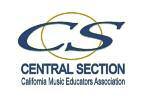
Lastly, Central Section wishes to be more than just an organization focused on festivals. Our board acknowledges that there are many rural communities (and some urban areas) that are underserved with music education. With the exception of our large urban areas of Bakersfield and Fresno, plus the scattering of a few mid-size cities, our section is mainly comprised of rural farming communities with populations of fewer than 15,000 people. Students in these communities deserve to have access to the same quality music education as anyone else. With the leadership of CMEA Urban/Rural Schools Representative Stacy Harris, Central Section is poised and ready to address these needs. This is undoubtedly a tall order, but our Central Section board is up for the challenge at hand. We look forward to the progress that awaits.
Best wishes for the rest of your school year.


ICMEA
by Ryan Duckworth
CMEA Southeastern Section President
t seems that a great many of my conversations lately have revolved around the idea of change: things that need to change; changes that we are afraid of; the inevitability of change. Indeed, change is a hallmark of our world. As the Greek philosopher Heraclitus said: “The only thing constant is change.” Yet as common as change is, when it comes to education and our classrooms, change can come at a glacial pace, often so slow it seems to not happen at all.
But sometimes change is needed and there are two kinds of changes you can make: reversible and irreversible. Some decisions truly are irreversible, and you had better be very certain about the wisdom of making such a change. But most changes we can make as educators fall into the realm of the former. Reversible decisions are just that –reversible. You try something new and if it doesn’t work you can either try something else, or go back to what worked before, but unless you try you will never know. The benefit of reversible decisions is that they are much lower risk, yet we too often resist these changes as if they were far more permanent. So I invite you right now to ask yourself, what is one change you might consider trying out next academic year? What is one thing you might try doing just a little differently?
This year I tried something new with my advanced vocal ensembles and had them work on collaborative composition projects. This is the first time I have ever included composition in my curriculum and it has been a great learning experience for them and for me. I already know that if I do it again there are many things I will do differently. And that is exactly my point –it is a reversible decision. I do not have to do the exact same thing next year that I did this year. I keep what works and change what does not. I am also still doing all the same things I had been doing in previous years. I had to choose slightly simpler literature for one concert to allow enough time to get the project started, but I still provided my students with a rich and varied choral experience and in addition, they learned a bit about the composition process.
Perhaps as you’ve read this you already have something in mind that you are going to try out next year. If not, then here are a couple of possible starting places.
The National Core Arts Standards (NCAS)
Are you familiar with the NCAS? If not, you might want to visit NationalArtsStandards.org and NAfME.org/core-music-standards. One of CMEA’s recent legislative victories was calling for the state arts standards to be updated. California is quickly moving forward with this and the new standards are going to be based upon the NCAS. Now might be a good time
to start looking ahead and seeing what the new changes could mean for you and your program. Are there areas of “enduring understanding” or “essential questions” that could inform a slight change in your curricula? The great teaching you already do is not going to change, but the new standards might just open up some creative ideas for ways you can enhance your curricula.
Last April, CMEA began a new one-day conference dedicated to the question of what opportunities music educators can provide to begin reaching the students who are not being reached by the current ensemblecentered models of music education. It was an amazing day and I was so challenged and invigorated by the presentations and conversations. I attended a session on group ukulele instruction for younger musicians using an altered tuning. I learned a little bit about using digital recording and some ways other teachers were encouraging students to create their own music. In fact, the seeds of my current experiment in teaching composition in the choral ensemble were planted that day. This April, Azusa Pacific University will host the second Casting a Wider Net Conference and, if you can attend, I assure that you will leave with plenty of new ideas to try in your own situation. If you miss it this year, keep watching for similar opportunities and conferences that can challenge you to think about new horizons in music education.
The CMEA Southeastern Section is also trying something new this year.
We are excited to be exploring an opportunity for our section’s elementary band teachers. Recognizing that elementary band programs are a foundation on which successful middle and high school programs are built, we want to provide enrichment opportunities for our elementary band teachers. After all, if you want a tree to grow strong, you have to make sure the roots are getting watered. The idea is that we will connect elementary band programs with a clinician who can visit the students at their own school, listen to a performance in the comfort of their own rehearsal space, and provide the same kind of feedback older students would receive at a festival. We are currently looking for elementary band teachers who will help us pilot this program. Ideally, we need a minimum of three ensembles within a particular area on the same day to make this work. If you are interested in helping us develop this opportunity, please contact us at cmeasoutheasternsection@gmail.com as soon as possible.


by Karen Childress-Evans, Ed.D.
n January 20, 2018, the CMEA Southern Border Section hosted its very first high school honor orchestra performance at West Hills High School in Santee, California, under the direction of Michael Gerdes, director of orchestras at San Diego State University. This was the first time any CMEA-SBS honor performance has been held in East San Diego County.
Michael Gerdes is a highly sought-after conductor and very popular with students who have had the fortune to play under his baton. His humor, knowledge of orchestral music, and ability to draw out the passion of the music in his students all added to the success of the evening’s program.
The evening’s musical selections included: Concerto for Two Trumpets and String Orchestra by Antonio Vivaldi, edited by David Marlatt; Elegy from Tchaikovsky’s Serenade for Strings; Orange Jam by Jeffrey S. Bishop; and The Odyssey by Soon Hee Newbold. Since this was an inaugural endeavor and at a time that many schools had their own musical performance conflicts, participation was by school music teacher recommendations, and the music selections were kept to a “challenging but not frightening” level of ability.
There was a $50 participation fee that paid for the conductor, music, programs, pins and coaches; however, scholarships were available to economically disadvantaged students thanks to a generous donation from Friends of East County Arts (a philanthropic group that funds arts organizations in East San Diego County) and Dr. Karen Childress-Evans.
Forty-three students representing more than fifteen high schools in San Diego County met for four rehearsals and one dress rehearsal before performing in the West Hill High School Theater. After one session with individual instrument coaches, music students from San Diego State University (SDSU) acted as coaches and mentors during the rehearsals and performed with the students. Trumpet soloists for the Vivaldi were also SDSU students. All students received first-year participation pins.
West Hills Orchestra Director Steve Lorentz, recipient of the CMEA-SBS Guitar Educator Award for 2017, was
thrilled about the event and agreed to hold it again next year if scheduling allows. West Hills Principal Robin Ballerin referred to the event as an excellent opportunity for East County students to participate in outstanding musical performances.
This opportunity was definitely the highlight of many students’ musical experiences, and Olivia Lorentz, principal violinist, said: “Being a part of this orchestra has been an enriching experience that I encourage all young string musicians to consider.
“I have grown exponentially in my musical abilities being under Mr. Gerdes and the other talented students in such a focused environment with challenging literature.”
Sepehr Lotfi, violinist from Grossmont High School, said that the experience “helped me enhance my personal level of playing.” He indicated that the opportunity was valuable because “players were from a variety of [advanced] skill levels which inspired other students to reach their own potentials.”
For further media information please contact Karen Childress-Evans, 619 206–1835 or dr.kcevans@gmail.com.
•
CMEA-SBS is an affiliate of the National Association for Music Educators (NAfME). Our philosophy behind these festivals is to provide a venue for the evaluation of student musical performances that is both rigorous and educationally valuable. At each of our festivals, ensembles will perform for a rating and/or constructive comments from a panel of judges, and then receive an onstage clinic from one of the judges. Our aim is to provide a forum for highquality musical assessment and growth that both students and directors alike will thoroughly enjoy.
Dr. Karen Childress-Evans is the retired VAPA Director for San Diego Unified School District and recipient of the CMEA-SBS District Administrator Award 2008, Kennedy Center/National School Boards Award 2010, Fortissimo Award 2013, and the Aubrey Penman Retired Educator Award 2017. She currently volunteers as artistic director for orchestras at Grossmont High School in El Cajon, and is a music education consultant.








Strengthen your school’s Music. Honor. And Society.
Starting a Tri-M ® Music Honor Society chapter will help show the value of your music program to the them to:
ï Build an impressive record for college
ï Grow as leaders in music
ï Serve their community
Ready to start a chapter? Visit nafme.org/tri-m
®


The Northern California Band Association (NCBA) provides judging for band competitions in Northern/Central California and Northern Nevada. These competitions include field competitions, band reviews, concert band, jazz band, winter guards, percussion, and solo drum major competitions. The NCBA was established in 1990 by music directors to provide an organization that could judge diverse marching band competitions that were being run by independent organizations. The goal was to provide consistency from competition to competition along with a slate of highly skilled judges. The goal of the organization is to not only provide judging for competitions, but to provide quality adjudication that supports education. Learn more about NCBA at www.ncbaonline.net
Large Ensemble & Jazz Festival
May 5, 2018
Del Mar High School
Spring Band Review
Vallejo Band Review
May 12, 2018
Encinal Band Review
May 19, 2018
All Northern Honor Band
January 18th–20th, 2019 Delta College, Stockton, CA
NCBA Annual Meetings Adjudication that Supports Education
Fall General Session & Host Director Meeting
June 2, 2018 at 1:30 pm Elk Grove High School, Elk Grove, CA
Judges Training & Certification Day
August 25, 2018 at 8:30 am Lincoln High School, Stockton, CA
Winter General Session
January 19, 2019 at 1:30 pm
Tillie Lewis Theater, Delta College, Stockton, CA
To receive updates, register to be on our mailing list: www.ncbaonline.net
Presents
With Leadership Coach Scott Lang
Gather • Inspire • Together
Ideal plan for students, program staff, leadership teams, and band directors. SPECIAL DISCOUNT FOR NCBA MEMBERS!
NCBA Members will only pay $75 and NCBA will pay the other $75! Includes the band director, assistant band director, staff members and all student leaders! Non-Membership Price: $150.00 Become a NCBA Member today! Register at www.ncbaonline.net
Questions: mariohsebastian11@gmail.com
June 2, 2018
Elk Grove High School, 9800 Elk Grove Florin Road, Elk Grove, CA 95624
9 am –11am: Student Leadership Presentation 11:30 am –12:30 pm: Directors, Staff, and Adjudicators
1:30 pm: NCBA General Membership Meeting, Booster Organization Workshop, and Student Activity



by Richard Lawton CMEA General Music Representative


It may seem odd in the wake of our own highly successful state music conference, CASMEC, to be talking about the goings-on at some other state’s MEA conference. However, the future of general and elementary music in California was the central focus at the 2018 CASMEC general music meeting, and one possible future is happening in Florida now.
Florida has an all-state elementary chorus and, for the last three years, an all-state elementary Orff ensemble, and both are thriving thanks to the collaboration of the Florida Music Educators Association (FMEA), the Florida Elementary Music Educators Association (FEMEA), and the Florida Orff and Kodály communities.
As has been reported here before (CMEA Magazine, Summer 2015), California lags behind other large states like Florida and Texas in terms of MEA membership as a percentage of the music teacher population. This seems to be especially true in the elementary and general music community, where teachers who wish to be of service in the cause of music education give their volunteer hours and membership dollars to their local chapter of the American Orff Schulwerk Association or the Organization of Kodály Educators and not to CMEA. Although CMEA has made strides in becoming a better general music service organization, for many elementary and general music specialists, membership in
CMEA feels redundant and expensive. It is understandable when these teachers ask, “If I join, what’s in it for me and my students?”
As our high school band, orchestra, and choir director colleagues know, the opportunity to participate in all-state ensembles is a great answer to that question. In Florida, it works like this: Teachers who are members of FMEA, FEMEA, and the National Association for Music Educators (NAfME) may recommend up to five of their fourth- or fifth-grade students for all-state elementary chorus or all-state Orff ensemble. Becoming a member of all three organizations is not as daunting or expensive as one might imagine. Like California, Florida is affiliated with NAfME, so NAfME membership is automatic. Unlike California, Florida collects those combined membership fees. This allows FMEA to offer a variety of Florida-specific membership options –for collegiate, orchestra, band, and elementary music –for an additional small amount.
Audition packets, which include sample letters to parent organizations and administrators, are made available in the spring so that interested students can prepare
and a half writing rubrics, and creating guidelines for selecting music and for implementation.
In September, students who have been recommended by their teacher submit their applications electronically along with a $15 fee. Judging is conducted by FEMEA. Adjudicators are selected from FEMEA’s seven regional sections, and care is taken to ensure that they do not judge auditions from students in their own region. All-state results are posted in midOctober, at which time additional fees are collected. The state conference is in January where both all-state ensembles perform.
Typically, 700 students audition for allstate chorus, with 200 selected, while the Orff ensemble draws more than 200 applicants (for 100 slots). At this year’s conference, the concerts took place on Thursday afternoon (chorus) and Friday afternoon (Orff). Each was preceded by a full day of rehearsal. The guest conductors were Dr. Lynn Brinckmeyer for chorus and Roger Sams and Beth Ann Hepburn (a featured presenter at 2017 CASMEC) for Orff. FMEA provided the conductors honoraria. Industry vendors, including Peripole,
Could we duplicate all-state elementary ensembles here? It would be an undertaking, and then some. The hurdles begin with our much larger public school student population, 6 million as opposed to 2.5 million in Florida. California does not have an independent statewide organization devoted to elementary and general music, the kind that has played so crucial a role in developing and maintaining the allstate program in Florida. Then, there is our sheer geographic size. But sometimes significant challenges can provide opportunities to solve other problems. One thing we do have in California is robust regional Orff and Kodály communities. These groups are filled with dedicated general and elementary music education specialists, who possess the expertise to develop such a program and the passion to sustain it. In the past, CMEA has sought ways to better interact with the Orff and Kodály chapters. Could working together to develop all-state ensembles be such an opportunity? Perhaps.
Whether all-state ensemble for elementary is the right idea for California is a broader philosophical question, but one thing is clear and should be of interest to

The 2017 Florida All-State Orff Ensemble concert performance can be viewed here: https://www.youtube.com/watch?v=y4xoOLCu294
The 2017 FMEA All-State Elementary Chorus concert performance can be viewed here: https://www.youtube.com/watch?v=xD3OUlXUjwU
for a fall audition over the summer. The audition material is straightforward. For chorus, students audition via video, singing America a cappella and Are You Sleeping? in a round with their teacher. For Orff ensemble, students are expected to demonstrate ability on recorder, unpitched percussion, barred instruments, and movement. Demonstration videos are available online. According to Lisa Hewitt, all-state Orff ensemble coordinator (and current AOSA-NBT vice president) the Orff audition materials were developed by a panel of experts from the Florida Orff community. This task force spent a year
West Music, and Music is Elementary, provided the instruments.
The presence of these additional young musicians and their families (FEMEA guidelines call for one chaperone per student) has meant that Florida band directors and other groups have had to make accommodations in their schedules, but the results, by all accounts, have been spectacular.
For the young participants, being part of an all-state ensemble is what being part of all-state usually is –a transformative musical experience they will remember quite possibly for the rest of their lives.
all parties: States that have active participation in state MEA’s tend to have better, more pervasive general and elementary music programs. Any idea that has the potential to create more teaching jobs and provide more of California’s students with music education needs to be given serious consideration. If an increase in CMEA membership is also the result, so much the better.
Getting started begins with a vision, some direction, and a little enthusiasm. The rest is usually a matter of rolling up our sleeves.


by Dr. Lisa A. Crawford CMEA Creating and Composition Representative
everal years ago, I found the first time the phrase “...providing opportunities to compose” was used in an article by Dr. Ray Levi (1991), head of the Agnon School in Beachwood, Ohio (renamed the Joseph and Florence Mandel Jewish Day School in 2015). Levi’s study was related to creativity of students in second grade, and he observed the problem of notation and compositional process and the forms of notation that young children select. We’re still using the phrase he spoke about almost thirty years ago, and are still thinking about how best to present opportunities to compose with quickly changing music technology.
NAfME has several composing competitions for both ensembles and technology. While we will be developing something similar for California students, the deadline for NAfME Student Composers and Electronic Music Composition Competition was March 30, 2018 (link here: https://nafme.org/programs/contests-calls-competitions/). Next year at CASMEC 2019, we plan to offer an opportunity for students to meet, perform compositions, and hear larger works performed by ensembles performing at our annual conference.
Dear California Music Teachers, (In-Service, Pre-Service, University, and Retired)
If you have developed your own creative music and composition lesson plans that you use with K–12 students in general, choral, band, mariachi, technology, guitar/piano/keyboard, or other types of music classes, please submit your favorites to be included in CMEA and Music Composition in California, a forthcoming publication about music educators who work compositionally with K–12 students throughout California.
Music composition lesson plans are due by May 15, 2018, 9:00 p.m. Please submit your updated bio with any number of lesson plans you wish to submit.
Please submit at your convenience in PDF format to Dr. Lisa Crawford at cmeasouthwestern@gmail.com.
Lesson plans may also be premiered at the June 11–15, 2018 Creating and Composition Workshop with Dr. Alexander Koops and myself held at Azusa Pacific University.
As this call represents our first invitation to collect and highlight you and the creative and compositional work you do with music students in California schools at the K–12 level, I will present the following: First Prize: $300, Second Prize: $150, and Third Prize: $75.
Watch for more details to follow.


Working closely with our NAfME Western Division Composition Representative Dr. Alexander Koops, I was able to present our first Music Tech Café - Young Composers Ensemble in 2017 at Azusa Pacific University in conjunction with a workshop he has offered each summer for students in grades 5–12. I began thinking about elements of technology and composing while completing my graduate work with Dr. Ruth Brittin at University of the Pacific and some of Music Tech Café was born there. We presented the first week-long workshop in August 2017. This year, due to earlier starts of the California public school year, we are offering the second annual workshop to all resident music teachers, June 11–15, 2018, 9:00 a.m.–3:00 p.m. Check out our Facebook page, CMEA Creating and Compo-
sition Ideas by Music Teachers, and CMEA e-mails for registration notices. I was invited by Dr. Koops this past fall to join his composition workshop with British composer Bill Connor. He plans to offer three of these workshops this year, offered in collaboration with a larger composition project he has organized over time, with two middle schools, a high school, and two Azusa Pacific University ensembles. I believe these workshops work well for pre-service and in-service music teachers to develop experience and ideas for working with music students. The workshop included my keynote, an interactive time with choir and band with Bill Connor, an interactive composing session with me, and an afternoon session on “Garageband” composing ideas led by Dan Noteboom. I felt it was a fantastic experience.
CMEA Creating and Composing wants you to know about opportunities for students to compose together, perform their original works, and to talk with other students who are also composing music. For example, following the Casting a Wider Net conference April 21 at Azusa Pacific University, we will be hosting a composition workshop especially for K–12 students. Teachers are invited to come, too. The workshop will be held from 4:00 p.m.–7:00 p.m. Look out for a CMEA eblast soon. During this workshop, stu-
dents will write music independently and in groups and there will be performances of students’ compositions. Registration: https://docs.google.com/document/d/1zz BZSA_e8oGaUxLiDm_ibOzzelaI8z51c3 mnWNlAE4/edit?usp=sharing
As I continue to consider what is needed in our state compositionally, my hope is that I will be able to begin visiting school districts in your CMEA sections in the very near future. I am also looking more closely at the social-emotional issues of students related to cultural divides, experienced traumas, and challenges and problems faced in the lives of children at home, in school, and in communities.
As I develop composition curricula for music teachers, I am considering evidence that schools must do more to support socio-economically challenged students, students with special and alternative needs, and developing their participation as part of the creative economy. What I find is that the more challenged our students are, the less able they are to focus on creative work and divergent thinking. I am also planning to build our workshops to include these topics throughout the state. There is much to discuss and we must make more time for it. If you are interested in this conversation, please contact me at cmeasouthwestern@gmail.com. My hope is that I will be able to begin visiting school districts in your CMEA sec-
Workshop
Music Tech Cafe-Young Composers Ensemble
Bill Connor Workshop
Bill Connor Workshop
Casting a Wider Net Student Composition Workshop
Music Tech Café Young Composers Ensemble
Bill Connor Workshop
Date
August 7–11, 2017
October 21, 2017
March 16, 2018
April 21, 2018 - 4:00–7:00 p.m.
June 11–15, 2018 - 9:00–3:00 p.m.
August 2018
Topic
Creating, composing, and technology with opportunities for music educators (pre-service, in-service, veteran, retired) to work compositionally with elementary and secondary students, guests, and K–12 and university ensembles
tions in the very near future.
In closing, CMEA President Scott Hedgecock invited me to begin the efforts here in California of organizing and leading music composition work with K–12 students and the work music educators do
to present opportunities to compose with K–12 students. I have worked compositionally with young children for nearly forty years, have especially loved the process of building skills with students over time, and now greatly appreciate the
opportunity for encouraging music teachers to find their ways of providing opportunities to compose. I want to express my gratitude for this position and the opportunities to work with so many of you.


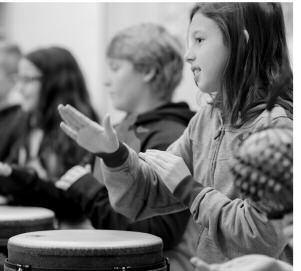
CONTACT US at 800-397-9378 or educationconsultants@westmusic.com!


INTIMATE CLASSES. INNOVATIVE PROGRAMS. OUTSTANDING ENSEMBLES.
Located minutes from downtown, the University of Portland combines personal attention with challenging academics in our nationally accredited music program.
Now offering a pre-music education track to prepare you for a Master of Arts in Teaching.
ENSEMBLES
University Singers • Wind Symphony • Orchestra • Women’s Chorale Jazz Ensemble • Vocal and Instrumental Chamber Music
2018 SCHOLARSHIP AUDITION DATES Monday, February 19
• Saturday, February 24 and March 3
FOR MORE INFORMATION up.edu/music
UPMusic@up.edu
503.943.7228


















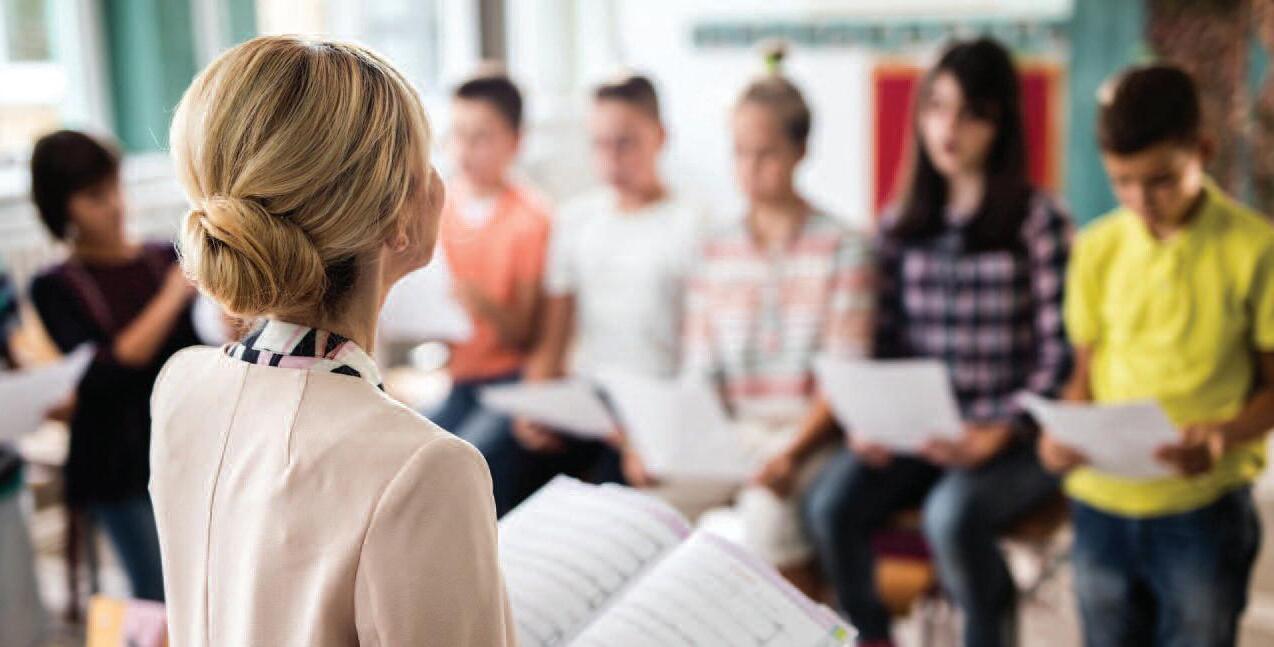









t every student has acethato ensur
tion (NAfME) is the laror Music Education f torsBelong ess to a well-balancct student has ac
tion ftional EducaWhertorsBelong
f music educagest network otion (NAfME) is the lar ehensive, and high-quality prompred,cess to a well-balanc
Sincf music educa f music instruction, taught ogram oehensive, and high-quality pr
WhereMusicEducatorsBelong
clusive online, peer-to-peer learning c, NAfME’s member-ex
ï onnect, post discussion thrc , NAfME’s member-exAmplify
ï
ï
oss the ctorsacre music educaommunity wher ess to rctionwide, and acte NAfME chapters na
te NAfME chapters nators, with 700 Collegia ession.ftionprch studies within the music educa
ï to members and networking events with futur or prMembership f f innovaA wealth o eads, and upload library ronnect, discussion thr
e cto events with futur tors, with 700 Collegiae music educaeservicor pr ch studies within the music educative r es.cesoureads, and upload library r ommunity wherclusive online, peer-to-peer learning c olleagues. e c
ïf innovaA wealth o
ountry can oss the c clusive es excesouress to r
ï well as the opportunity to have your blog published and shar
te in NAfME-sponsoror your students to participa
ï posers Competition—and to crStudent Com or your students to participaOpportunities f ch studies within the music educaeseartiverf innova 1-800-336-3768 at te or join a Teaposers Competition—and to cr
Complimentary annual subscriptions to NAfME’s various periodicals, including
ed via our biweekly e-newsletterwell published and shar t , or a
ed events—including the All-Nate in NAfME-sponsor ession. .ed via our biweekly e-newsletter
ducaMusic Eand eaching Music T Teaching
tional Honor Ensembles and the ed events—including the All-Na , as tors Journalduca
tional Honor Ensembles and the
Music Honor Society chapter in your middle or high school. ® ri-Mte or join a T
gfme.orna
nafme.org
es ontact Member Servic
ontact Member Servic, or c
g.fme.ores@na
1-800-336-3768memberservices@nafme.org.



A Sampling of the Many Music Education Activities Taking Place on our State’s College and University Campuses by
Dr. LawrenceF.Stoffel
he Hollywood Reporter has released its annual list of “The Top 25 Music Schools.” California once again dominates the list with an unmatched inclusion of five schools.
Five California universities/conservatories have been perennial favorites in past years’ lists: USC, San Francisco Conservatory, CSU Northridge, CalArts, and UCLA.
This year’s list takes a more narrow focus as “The Top 25 Music Schools for Film and TV.” The magazine’s list identifies “the best institutions to attend if you want to be a world-class musician (and make a living) in Hollywood.”
THR reporter Jeff Bond states: “For students hoping for a career in music for film and television, L.A. still holds a big advantage on THR’s annual list of the world’s best music schools. As Mark Watters, currently running the Beal Institute at upstate New York’s Eastman School of Music, puts it: ‘Having a film scoring program outside Los Angeles is like having an oceanography department in Kansas.’ But with college tuitions varying wildly –Cleveland’s Music Institute costs almost $50K a year while Paris’ Conservatory is free –knowing what you’re getting for your money is key. So whether you’re hoping to stand behind a conductor’s podium or actually earn a living playing music, this list will help you find the program with the best culture, curriculum and, yeah, cost.”
Listed among Juilliard, Oberlin, Eastman, the Royal College of Music, Indiana, and the Curtis Institute, are these five celebrated California music programs:

University of Southern California
“Thornton offers the rigorous approach of a conservatory along with an equally strong focus on contemporary media music. The school recently added five new graduate programs, including arts leadership, community music, contemporary teaching practice, music industry and screen scoring, which teaches students the ins and outs of scoring everything from motion pictures to video games and even virtual reality systems.”

“With departments in ethnomusicology, music and musicology, the Herb Alpert School boasts a progressive, multicultural approach to learning as well as high-profile public concerts and lectures that have become an integral part of the vibrant Los Angeles cultural scene.”

of Music
“Founded in 1917, this private institution manages to blend the grand traditions of a classical music education with an influence –and a generous infusion of cash –from Silicon Valley and its video game businesses. ‘San Francisco Conservatory is getting very noticeable and good and should be looked at if you want to get into gaming,’ notes composer Larry Groupe.”

“Originally a division of the USC Thornton School of Music, the school split from Thornton in 1980, and on the strength of an endowment from namesake Richard D. Colburn, it continued to thrive.The downtown L.A. school, which in partnership with the dance school is known as Colburn’s School of the Performing Arts, recently received a $1 million bequest from the estate of Iona Benson, a donor and former board member, which will support need-based scholarships.”

“Long on the cutting edge of filmmaking, Valencia’s CalArts is equally progressive in the field of music, sporting its own division of the Herb Alpert School of Music. The school’s MFA experimental sound practices specialization allows advanced students to explore a range of unconventional musical approaches, such as circuit-bending, modifying, breaking down conventional instruments and a wide variety of other techniques.”
The complete article is found in The Hollywood Reporter, November 1, 2017 (Issue No. 33), and online at https://www.hollywoodreporter.com/lists/top-25music-schools-film-tv-1051776/item/usc-top-25-music-schools-20171051778.
If you have an item for a future “Higher Education Happenings” column, please e-mail your item (in 200 words or fewer) to Lawrence Stoffel at stoffel@csun.edu. Submissions will be included on a first-come/space-available basis. This column contains items received by submission as well as from culling the Internet.


by Nancy Ludwig
CMEA State Choral Festival Coordinator
The 2018 CMEA State Choral Festival took place on Thursday, March 8, 2018. It was hosted by the Musco Center for the Arts at Chapman University located in Orange, California, and largely sponsored by World Projects. Adjudicators Jenny Bent from Sonoma State University, John Tebay from Fullerton College, and Jonathan Talberg from CSU Long Beach were well received and did an outstanding job of continuing the expectation for true excellence at this festival. The thirteen participating choirs were extremely well prepared, and all represented their respective schools in the most positive way.
Participating choirs came from all over the state, represented middle school and high school choirs, and groups from different sized choral programs and all community types were represented from rural to metropolitan areas. This festival was a true representation of choral excellence regardless of situation, and all choirs and their conductors are to be commended for their outstanding work and dedication to this goal.
CMEA would like to thank the Musco Center for the Arts and Chapman University, as well as the student volunteers from CSU Long Beach, the Fullerton Union High School Tri-M Student Chapter, and the Mountain View High School Choir Council.
Middle School Festival Participants
Bernardo Yorba Middle School Vocal Ensemble, Linda Nason, director
El Capitan Middle School Chamber Choir, Jacob Bailey, director
Glacier Point Middle School Choir, Jeff LaRose, director
Hughes Middle School Chorale, Steven Clausen, director
Manhattan Beach Middle School Madrigal Singers, Heather Gold-Pollak, director
Roosevelt Middle School Mixed Ensemble, Beverly Taylor, director
High School Festival Participants
Beckman High School, Bel Canto Choir, Nancy Stuck, director
Beckman High School Madrigals, Nancy Stuck, director
California High School Chamber Choir, Dan Hawkins, director
Mission Viejo High School Chamber Singers, Sarah Norris, director
Porterville High School Madrigals, Aaron Snell, director
Redwood High School Chamber Singers, Melchor P. Carrillo, director
Santiago High School Madrigals, Karen Garrett, director

Announcements for the next CMEA State Choral Festival date and location will be announced soon! As the school year comes to a close, please keep in mind that any group who earned a unanimous superior rating at the CMEA or SCVA festival they attended in spring of the current year is eligible to apply for the state festival in the following year. Copies of adjudication sheets must be submitted along with your application in order for your ensemble to be considered, in addition to a current recording.
Directed by Nancy Stuck




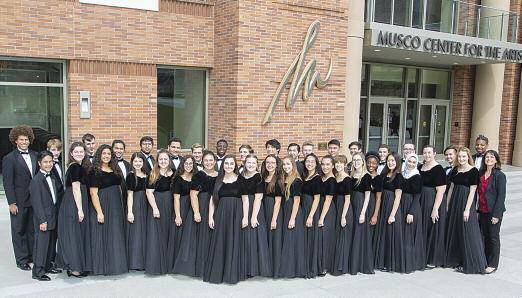


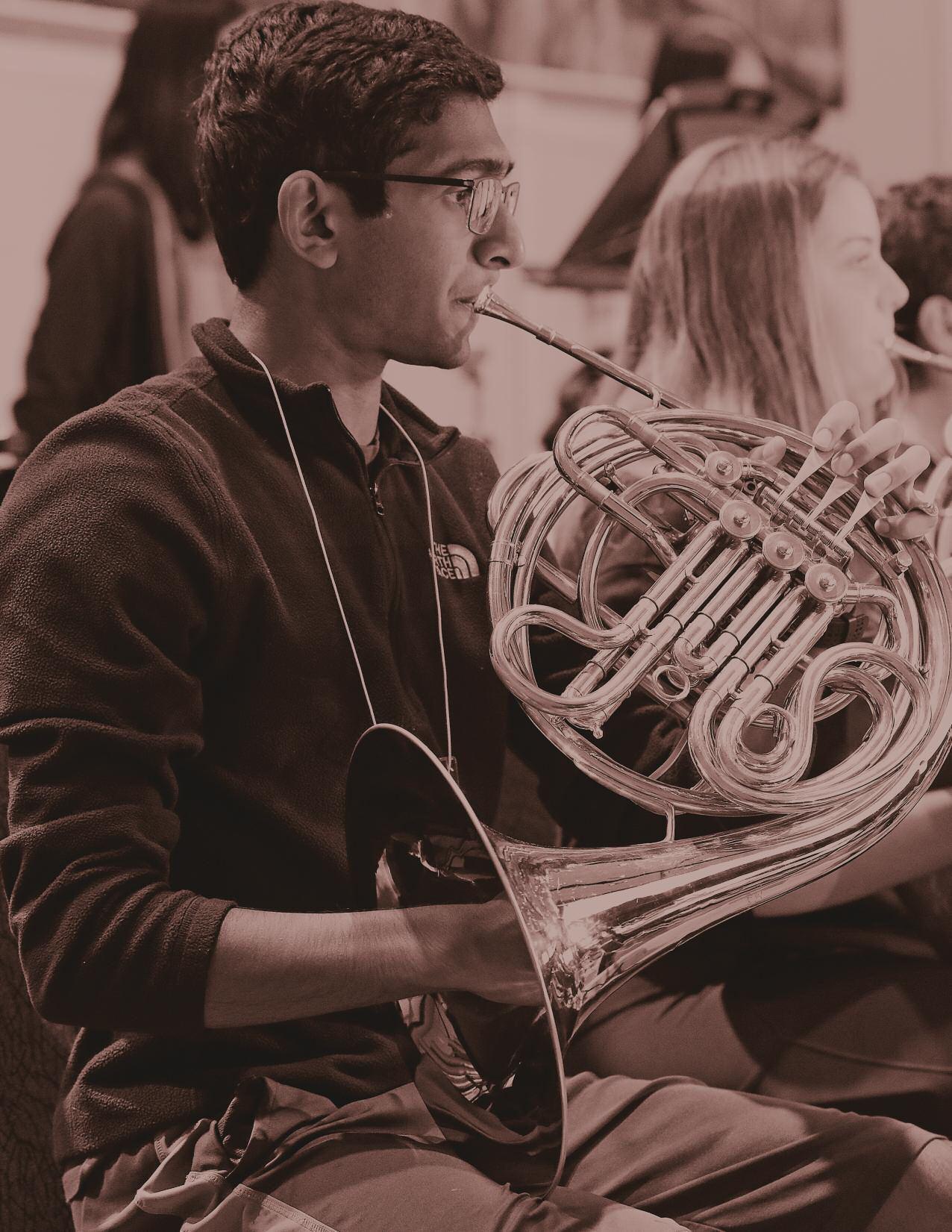
Esteemed Colleagues,
I am excited to announce that, thanks to continued support from our premier sponsor, World Projects, as well as Dr. Andy Collinsworth from Sonoma State University, the 2019 CMEA State Band and Orchestra Festival will be taking place on Friday, April 12, 2019, in the beautiful Weill Hall on the campus of Sonoma State University.
Highlights of the festival include:
A performance in a first-class venue.•
Adjudication from nationally recognized adjudi-• cators.
Recognition of each ensemble with a plaque• commemorating their performance.
Hearing some of the best groups from around• our state.
Application information:
Applications and information on how to apply• is now posted on the CMEA website.
Applications will be due on Friday, June 1, 2018.•
To qualify, applicants must have received a• Unanimous Superior rating at a CMEA sanctioned festival during the 2018 spring semester. CMEA sanctioned festivals include festivals hosted by CMEA Sections and SCSBOA.
Applicants will be required to submit an• ensemble recording of approximately 15 minutes of music with at least two works that best demonstrate the group’s abilities. No CDs will be accepted, all recordings must be digital.
I highly encourage those of you that have not attended the festival in the past to apply, and hope that those of you that have attended in the past will consider applying again.
Keith Johnson CMEA State Band & Orchestra Festival Coordinator





Advocacy Day by Jeremiah
Jacks
CMEA SU4M Performance Day Coordinator
Iam excited to be a part of the Stand Up 4 Music Advocacy Day this year as your SU4M Performance Day Coordinator. It’s amazing to see how the event has grown and evolved over the years. I believe this year will be an even greater, more passionate day of advocating for every student’s right to a quality education in music. CMEA has taken on a strong leadership role over the past decade in bringing together the various disciplines in music education so we have a unified voice as we advocate for our children’s education in music. On May 17, 2018, eight selected and diverse ensembles from across our state will perform at our State Capitol, while leaders from music educator associations across California meet with state legislators and their advisors. It’s a day filled with passion for public music education.
I am pleased to announce our eight music programs that have been selected to perform for SU4M Performance Day.There were a number of applications submitted from many wonderful music programs. Ensembles selected to perform for this event represent a variety of ensembles from a diverse population of students. Congratulations to the following ensembles who will be representing their school and their community at our California State Capitol.
From Folsom, Sutter and Folsom Middle School String Orchestra, directed by Margy Moon.
From Modesto, Enoch High School Symphonic Band, directed by Phillip Vallejo.
From Davis, Davis High School Jazz Combo, directed by Thomas Slabaugh.





From San Rafael, Davidson Middle School Steel Drum Ensemble, directed by Dana Trillo and Michael Mares.
From Roseville, Chilton Middle School Jazz Band, directed by Stephanie Sugano.
From Fullerton, Parks Jr. High School Orchestra, directed by Doug Boughter.
From Atwater, The Buhach Colony High Thunder Band, directed by Chad Humpal.
We hope you will come join us for the morning to support our students and our leaders as they advocate for an education in music for all students. Bring some students up for the day, invite some parents, and enjoy the music these fantastic ensembles will be sharing with us, and spend some time at the Capitol.
I hope to see you there.



Friday evening, February 16, 2018 Il Fornaio, Cucina Italiana, San José, California
Opening remarks by CMEA President Scott Hedgecock: Good Evening, and Welcome.
I am Scott Hedgecock, CMEA president It is my pleasure to welcome you to the Annual CMEA Gala where outstanding individuals are honored for their work supporting CMEA’s vision that all students in California have equal access to high quality music instruction as part of a well-rounded education.
As we begin our awards ceremony, I want to call your attention to the program on your place setting Award winners will be recognized in this order. As your name is read, please come forward to be recognized. A short narrative will be read about your selection, and then an award will be presented to you. Lastly, a CMEA Executive Board Member will direct you to the side for a photograph that will appear in the CMEA Magazine.
Presenting awards tonight will be CMEA President-elect John Burn, CMEA Interim Vice President Mario Sebastian, CMEA Immediate Past President Michael D. Stone, and me.
Before we start, I would like to thank the following people who have worked very hard to make this evening possible: CMEA Secretary Sandra Lewis for her adept work organizing this year’s CMEA awards program; CMEA President-elect John Burn for organizing the venue and meal with Il Fornaio; CMEA Executive Administrator Trish Adams for ticket sales and keeping us all together; and CMEA Administrative Assistant Heather Adams for her work with the program and many other important details.
Please welcome President-elect Burn, who will present our first award.
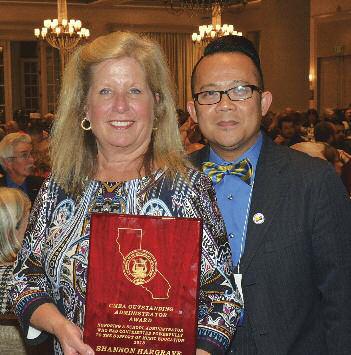
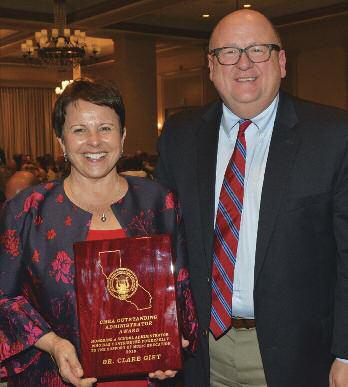

John Burn:
The CMEA Outstanding Administrator Award honors educators who, as school administrators, have contributed powerfully to the support of music education. This year, in recognition of the importance school administrators have on the success of music in our schools, we recognize three individuals. Superintendent/Principal Hargrave has been at the K–8 school district for five years. In that time she has not only continued funding for the K–8 music program but has added a middle school elective wheel that provides arts experiences in the visual and performing arts and after-school MS choir and theater programs. She has encouraged and supported partnership with San Diego County Arts Empower and the CA Arts Project as well as established an ongoing partnership with the California Center for the Arts, Escondido. She was instrumental in finalizing the district’s strategic arts plan which guides the district towards greater equity and access in arts education and is divided into six “Focus Areas” that address specific goals and objectives of our comprehensive arts program:
1. Comprehensive arts curriculum for K–8 inclusive of the VAPA/NCAS and CC standards.
2. Professional development for administrators, teachers, and volunteers in the visual and performing arts.
3. Credentialed VAPA teacher to provide music, theater, movement/dance.
4. Reach beyond the walls of our school to create partnerships with community organizations, museums, and industry professionals to support and enrich opportunities we present to our students.
5.Permanent, dedicated, purposeful equipment and facilities to support arts curriculum.
6.Funding by the general fund, supplemented by grant programs, donations, the foundation, and fundraising efforts. The greatest highlight for the children here at SPU during the school year is the annual all-day Art Day and the endof-year dinner theater/musical. Mrs. Shannon Hargrave has created amazing opportunities for a small school district which ranks 42 out of 42 in S.D. County for state funding. She is a leader to be recognized and celebrated. Congratulations, Shannon.
Scott Hedgecock:
In her nominating statement, Susan Burley talks about Dr. Clare Gist:
“I met Dr. Clare Gist twenty-seven years ago when she started working in our district as a thirdgrade teacher for Pleasant Elementary School. Prior to becoming superintendent she was a principal, director of funded programs, and assistant superintendent of business services. She is now in her fifth year as superintendent of the Tulare City School District. Before she became superintendent, I was the music teacher for Cherry Avenue Middle School. During my teaching career, we had nine teachers total in music education. When I decided to retire, I took a proposal to Dr. Gist to expand our music program. She jumped on board and said: ‘Let’s do this!’ Since becoming the visual and performing arts advisor for the district, Dr. Gist has hired three more instrumental teachers, making a total of ten, and four additional vocal/classroom teachers, for a total of six. Before we hired our additional seven staff members, we taught full beginning band and orchestra twice a week for a half hour. We were experiencing drop-out at the middle school level due to no like-instrument instruction. With the additional staff, we now have beginning band and orchestra three times a week and are able to offer like-instruction. By expanding our vocal/classroom program, we were able to offer middle school choirs and two levels of elementary choir. We owe all this to Dr. Gist in wanting to fulfill her dream and our proposal.
“I had the pleasure to visit with Dr. Gist recently and she gave me some of her thoughts on her philosophy on arts education. She actually entered the education field as a second career. Her musical background was taking choir and drama during her early years. There are two parts in her mind about teaching.”
Dr. Gist stated the following about her philosophy:
“What is learning and how do we learn? That is the question that should define the work we do in education. Historically, schools have placed students in classrooms, four walls, several hours a day in order for them to receive directed instruction. But I beleive that real learning is more experiential and memorable than that. It is more about developing new context and accessing prior experiences so new learning can occur. The arts are very contextual, which involves all the senses. Integrating the senses into art education is a natural process. The arts also evoke many emotions that in turn create lasting memories that connect us on a deeper emotional level to a particular concept or idea. What is remembered is learned.”
The third CMEA Outstanding Administrator Award goes to Lauren Shelton. Accepting the award on her behalf is former Southern Border Section President Mark Nicolson with CMEA Interim Vice President Mario Sebastian.
Mario Sebastian: Lauren Shelton grew up in Del Mar, California. The public schools she attended had very little in the way of music, so Lauren’s parents cobbled together the funds (and with grandparents’ support) to allow her to participate in San Diego Children’s Choir. By the time she was eighteen, Lauren had already participated in several international tours. The experience had a transformative effect, but Lauren was always aware of the sacrifices her family made, sacrifices beyond the means of many families, particularly in the inner city.
In 2011 the San Diego Youth Symphony began a program, Community Opus Project, to provide music education in the Chula Vista Elementary District. Lauren, who was working as guest conductor (intermediate and neighborhood choir director) with SDCC, was hired as the program’s coordinator. From a little more than a concept and one teacher, Lauren developed a full program of foundational general music instruction that was an immediate hit with students, parents and administrators in Chula Vista. Community Opus (project) was so successful that in 2014 when a VAPA Strategic Plan was developed by the CVESD, Lauren was hired as VAPA coordinator. During Lauren’s three years as VAPA coordinator for CVESD, the district has hired over ninety VAPA teachers serving the 29,500 students in the district through the $6.1 million a year investment through the LCAP. Lauren has also been the driving force behind the establishment of an Orff Levels Course in San Diego.
In 2017, more than thirty elementary music teachers, nearly double the average enrollment, took part in Level I, and an expansion to two levels for Summer 2018 is already being planned. It has been a remarkable transformation of a community in a very short time.
Congratulations, Lauren.





John Burn
:
CMEA Section Awards are the highest honor that can be bestowed upon a music educator in any given CMEA section. It’s our pleasure tonight to introduce our section award recipients. As our honorees come forward, I ask that their respective section president or president’s designee join them.
Gregory Conway has been the director of instrumental music at William Hopkins Jr. High School in Fremont since 2005. During that time, Mr. Conway has continued the tradition of excellence in the band program at Hopkins. He also added a new string orchestra program, established in 2005, to the music department at Hopkins. The Hopkins Wind Ensemble was a featured performer at the CMEA State Conference in 2010, and the Hopkins Advanced Orchestra was a featured performer at the California All-State Music Education Conference in 2012 and again in 2017. In 2017–2018, Mr. Conway directs the seventh and eighth grade music classes at Hopkins involving about 370 students and including three concert bands, two string orchestras, two jazz ensembles, and a full orchestra. He also directs a sixth grade advanced elementary band and a sixth grade advanced elementary string orchestra, and coordinates four additional elementary level string orchestra classes for students in the Mission San Jose Attendance Area of Fremont USD. Mr. Conway received his B.A. in music education/saxophone performance from California State University, Hayward in 2002. He has studied saxophone and woodwinds with Tony Gallardo, Ann Porter, and Daniel Zinn; and studied conducting with Timothy M. Smith. Mr. Conway currently plays saxophone in the Chabot College Wind Symphony in Hayward. He has served on the CMEA Bay Section Board since 2006 and currently holds the position of large group festival coordinator. Mr. Conway also has served as the band director the past eleven years for the nonprofit Jenny Lin Foundation Summer Youth Music Program, open to students from throughout the Bay Area, and held each summer in Castro Valley. Congratulations, Greg.
Mario Sebastian:
Curtis Gaesser has been teaching in the Folsom Cordova Unified School District since 1984, and at Folsom High School since 1987. He currently teaches marching band, two orchestras, jazz choir, three jazz bands, concert band, color guard, and drumline for grade levels nine through twelve.
Mr. Gaesser was honored as 1995’s “Most Outstanding Music Educator” by the California Association for Music Education and was “California State Jazz Educator of the Year” in 2003. In 2017, the California Association for Music Education Capitol Section honored Mr. Gaesser as the “Music Educator of the Year.”
In 2008, he was awarded the “Annual National Achievement Award in Jazz Education” by DownBeat Magazine and the “Music Achievement Award” by Sacramento News & Review.
The city of Folsom presented Mr. Gaesser with the “Man of the Year” award in 2001 and the Folsom Chamber of Commerce awarded him the “Outstanding Educator of the Year” title in 2016. He also received the Folsom Cordova Unified School District’s “Teacher of the Year” award in 1990 and again in 2011.
But the most important accolade at Folsom High School is the winning philosophy that musical participation presents students some of life’s greatest lessons.
To quote Curtis Gaesser: “I don’t think there is anything more rewarding than to see kids perform at their best after a lot of hard work. I don’t care if we win or lose; I just want these kids to do their best.”
Congratulations, Curtis.

Michael D. Stone:
Amanda Isaac was born and raised in Bakersfield, California. After earning both a B.A. and M.A in music from California State University Chico, she furthered her professional studies by completing Kodaly certification from McNeese State University in Louisiana under the direction of Lamar Robertson, Ann Eisen, and Susan Tevis. Now in her thirteenth year with the Norris School District (back in Bakersfield), she currently directs eleven choral groups ranging between fifth through eighth grades, four of which are at the junior high, and teaches second and third grade classroom music at two of the four elementary schools. She serves nearly 1,000 students a year and literacy is the cornerstone of everything that she teaches them. Her junior high choirs consistently earn superiors or higher at festivals and her students regularly participate in county, all-state, division, and national honor choirs. She has presented at both regional and state conferences for multiple organizations and enjoys guest conducting honor choirs. In 2016 she joined the faculty of the Colorado Kodaly Institute where she teaches the level three pedagogy and folk song analysis graduate-level courses.
Named the Kern County Music Educators Association’s Choral Educator of the Year in 2013 and General Music Educator of the Year in 2017, She is currently serving her second term as the organization’s president. She also chairs the Kern County CMEA Choral Ratings Festival, the California All- State Middle School/Junior High Honor Choir, and holds active memberships in the California Music Educators Association, American Choral Directors Association, and Organization of American Kodaly Educators.
Congratulations, Amanda.

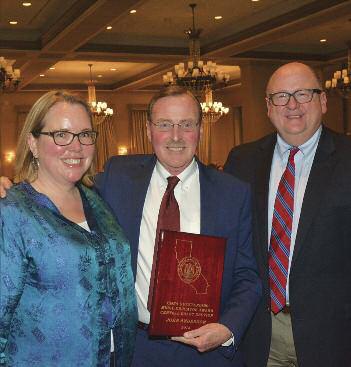

Scott Hedgecock: John Anderson is in his twenty-ninth year as a member of the music faculty of Monterey Peninsula College where he teaches music history, theory and performance studies. For the past eighteen years he has also served as chair of the division of creative arts. He has had nationwide experiences as a guest conductor and clinician, and has served on the faculties of Transylvania University in Lexington, Kentucky; Indiana State University; Cal Poly at San Luis Obispo; and Cabrillo College. He has also served as associate conductor of Colorado’s prestigious Breckenridge Festival for seven seasons. Dr. Anderson is the founding conductor of the Ensemble Monterey Chamber Orchestra, an elite professional ensemble which critics have called: “...a unique musical treasure.” (Nathalie Plotkin, Monterey Herald). Ensemble Monterey is now in its twenty-sixth season of concerts. A recognized expert in the music of Edgard Varese, Dr. Anderson’s articles on music theory have been published in the Musical Quarterly and the CBDNA Journal. Dr. Anderson also pursues a second career as a classical recording engineer. His recording credits include the Aspen Music Festival and School, and the 250th anniversary recording of Handel’s Messiah in Dublin, Ireland. A native of Cupertino, California, Dr. Anderson holds a bachelor’s degree in flute performance and a master’s degree in music education and aesthetic philosophy, both from UCLA. In 1984 he was awarded a doctorate in conducting from the University of Northern Colorado. His teachers have included Rocco DiStasio, Elizabeth A.H. Green, Nicolas Slonimsky, Sheridon Stokes and Eugene Corporon.
Congratulations, John.
Michael D. Stone:
Holly MacDonell grew up playing violin and viola in Orange County, California. She went to school at Humboldt State University and received her bachelor’s degrees and teaching credentials in English literature and music education. Holly currently teaches K–8 general, string, and choral music at Fieldbrook School and 4–8 grade string and choral music at Coastal Grove Charter School. She is currently the president of the CMEA North Coast Section.
Holly chairs the junior orchestra component of the NC-CMEA All-County Music Festival.
Holly is keenly aware of the challenges of music educators in a largely rural area, and works diligently in keeping their interests and needs at the forefront of her work at the state level.
Congratulations, Holly

The CMEA Northern Section Outstanding Music Educator Award goes to Ted Dykstra, with CMEA Northern Section President Michael Phenicie and CMEA President-elect John Burn.
Mario Sebastian:
Ted Dykstra has taught music for more than thrity-five years. During his twenty-five years at Anderson Middle School, he has created an amazing junior high music program. He has worked tirelessly to create a program in which all students have access to instruments if they choose. Through grants and support of his district, he has a vast inventory of instruments to be used by students from families who may not otherwise be able to provide them. In his first year there were 27 kids in seventh/eighth band. Currently he has 160 out of 325 total enrollment. Several of his students have gone on to become excellent music educators and performers.
His nominating member says: “We are blessed in the CMEA Northern Section to have so many great music educators, but the one who has made the biggest impact in my life is Mr. Ted Dykstra.
“Twenty years ago, I was a student in the Anderson Middle School band, and Mr. Dykstra was my first band director. I gained so much more than the knowledge of music from being in his band. I learned how to push myself to excel at something. I learned to be a team player by working with everyone in band towards a common goal. He pushed me even further by encouraging and helping me to audition and make it into honor band. He helped me become more confident by encouraging me to play at the solo and ensemble festival. This man, by offering the activities any band director has the opportunity to offer their students, was one of the guiding role models who shaped the person I am today, and the reason I am now a music educator myself.”
Congratulations, Ted.





The CMEA Southern Border Section Outstanding Music Educator Award goes to Dean Hickman with CMEA Southern Border Section President Laura Smith and CMEA President Scott Hedgecock.
Mario Sebastian:
Scott Hedgecock:
Christopher Peterson is professor of music at California State University, Fullerton where he directs two choirs and teaches classes in choral music education. In his thirty years as a music educator, Dr. Peterson has taught in elementary, middle school, high school, church, community, festival, and collegiate settings. He is also a published author, editor, composer, and choral arranger for Hal Leonard Music Publishers. His choral methods college textbook The Art of the Choral Music Educator: Pedagogy, Methods, and Materials for Tomorrow’s Outstanding Music Teachers is currently in press and will be published in 2018 by Pavane Publishing. Peterson has served as state choral representative and southern section president for the California Music Educators Association (CMEA), as well as the western division representative for the National Association for Music Education’s (NAfME) Council for Choral Education. He has also served the California Choral Directors Association in various offices, and is the current CCDA treasurer. He has been invited to teach, judge, and conduct choirs in more than thirty U.S.A. states and nine countries, and has conducted all-state choirs in Maine, North Carolina, Oregon, and California. Dr. Peterson earned a bachelor of science in music education from the University of Southern Maine, and a master of music in choral conducting performance from the University of Maine. He earned the doctor of philosophy in choral music education and conducting from Florida State University, where he studied with Rodney Eichenberger, Andre Thomas, and Clifford Madsen. Congratulations, Chris.
Dean Hickman retired in June 2009 after teaching in the San Diego Unified School District (SDUSD) for thirty-three years. He earned his bachelor’s degree in mathematics, with a minor in music, from the University of California, Berkeley in 1969. Following a six-year tour of duty in the U.S. Navy Submarine Force, he began his teaching career at Point Loma High School and subsequently taught at three other high schools and one middle school in SDUSD. He received his M.A. in education from United States International University in 1982.
Mr. Hickman’s involvement as a board member with the CMEA Southern Border Section dates back to the 1980s, when it was known as the San Diego City/County Music Educators Association. During that time, he created and managed the first high school honor band that the organization sponsored. More recently, he has served as newsletter chair, communications representative, website manager, and vice president for wind education. He is currently the head judge for CMEA-SBS and is in charge of the training and scheduling of judges for the organization’s band and orchestra festivals.
Mr. Hickman has long been a strong advocate for music in the public schools. He was involved in the creation of the Community Council for Music in the Schools (CCMS), a grass roots organization dedicated to keeping music as a vital part of the educational day in SDUSD. He helps with the administration of CCMS’s instrument loan program, which receives donations of instruments and loans them to students who would otherwise not be able to have them.
In retirement, Mr. Hickman stays active in both music and education. He is a BTSA support provider for young teachers as they pursue their clear teaching credential. He is the conductor of the Pomerado Community Band and has led it since its founding in 1990, and he performs throughout the greater San Diego area as a member of several small brass ensembles and pit orchestras for local musicals.
Congratulations, Dean

The CMEA Southwestern Section Outstanding Music Educator Award goes to Emma Joleen, with CMEA Southwestern Section President Alexander Koops.

Michael D. Stone: Emma Joleen shares her passion for music education across the nonprofit, public and private sectors. Emma teaches general music and choir based on her Kodály, Orff and Dalcroze certifications for Public School Arts (P.S. ARTS) in the Santa Monica Malibu Unified School District (SMMUSD). Emma also teaches musicianship for the Los Angeles Children’s Chorus (LACC) and as part of their community outreach program, Emma teaches the First Experiences in Singing curriculum. Emma has been instrumental in creating choral projects in downtown Los Angeles, for example, the very first elementary aged honor choir for the LA Philharmonic’s Youth Orchestra Los Angeles at the Heart Of Los Angeles, as well as preparing choirs to sing at the Hollywood Bowl and Walt Disney Concert Hall under the direction of esteemed conductors such as Gustavo Dudamel, Juan Felipe Molano and Vince Mendoza. Emma is passionate about singing and vocal pedagogy, having completed her undergraduate degrees and gained many years of work experience around the world. Emma is currently studying her master’s of music in choral conducting under the tutelage of Dr. William Belan and Don Brinegar at CSULA.
Congratulations, Emma.

The CMEA Elementary Music Specialist Award goes to Debbie Burton, with with CMEA President-elect John Burn.
Scott Hedgecock:
The CMEA Elementary Music Specialist Award honors excellence in elementary music instruction. The CMEA Elementary Music Specialist Award goes to Debbie Burton.
Debbie Burton has her B.A. music education and MMED with Kodály emphasis: Holy Names College. She has Orff Levels I, II, III and Kodaly Levels I, II, III. Debbie Burton has been an elementary, middle school and high school music specialist for more than forty years specializing in elementary education, concert and jazz band instruction, choral and handbell performing groups. In July 2017, Debbie retired after more than eighteen years with the San Diego Unified School District. She has also served as mentor teacher to many SDSU student teachers and interns.
Debbie taught classroom Music K–5 at Jerabek Elementary School and Crown Point Junior Music Academy, and is still instructing at the college level as an adjunct professor at San Diego State University and Point Loma Nazarene University teaching music for elementary school teachers. She is a local and national Orff and Kodály presenter. She was selected as the CMEA (California Music Educators Association) Southern Border Section Elementary Music Teacher of the Year for 2016–2017. Ms. Burton is presenting in April, 2018, at the Tennessee Music Educator’s Conference in Nashville.
Debbie Burton currently serves on the board of the San Diego American Orff-Schulwerk Association Chapter and is its past treasurer and president. She also served as co-local conference chair (LCC3) in charge of instruments for the 2015 national conference in San Diego. Congratulations, Debbie.

The CMEA Peripole General Music Educator Award goes to Richard Lawton, with CMEA President Scott Hedgecock.
Mario Sebastian:
CMEA is pleased to award Richard Lawton with the CMEA Peripole General Music Educator Award.
Mr. Lawton has been teaching general music in public elementary schools in Los Angeles since 2005. He began as a parent volunteer at his own children’s school but quickly realized that, in teaching foundational music skills to children, he had found his calling. Returning to school, he obtained his teaching credential, Orff Schulwerk certification, and master of music degree from California State University, Los Angeles in 2010. In 2013, he began his tenure as the general music representative on CMEA Council of Representatives, a post he still serves in today. He became LACAOSA Chapter President this year.
He currently teaches at Roscomare Road Elementary School, part of the Los Angeles Unified School District. He sees all 470 students there once a week (TK and Kindergarten twice a week.) His program also includes an after school group, the Roscomare Roadrunner String Band, a grade three through five elective ensemble that combines ukulele and vocal music instruction. Congratulations, Richard.

Michael D. Stone:
The CMEA Middle School Music Specialist Award honors excellence in middle school instrumental and/or choral music instruction. This year, CMEA is pleased to award Eric Kooi with the CMEA Middle School Music Specialist Award.
Mr. Kooi is an instrumental music teacher at Valley Christian Middle School in Cerritos, California. He has been teaching instrumental music for twenty-one years. He received his bachelor’s in music education from Dordt College in Sioux Center, Iowa, and a master’s degree in music education from the University of Hawaii.
Eric is active as a clinician and conference presenter, presenting on topics such as music composition, assessment in the music classroom, and strategies for teaching trombone students. He also serves on visiting committees for the Western Association of Schools and Colleges.
Mr. Kooi has a great rapport with his students, brings enthusiasm daily to his job, inspires his students to really practice and improve in their skills and make real music daily, and includes improvisation and composition as an integral component of his curriculum. Mr. Kooi has shown consistent quality in his teaching, great choices in his repertoire, innovation in his teaching through the incorporation of composing in his curriculum, and a great love of students.
Congratulations, Eric.




John Burn:
The CMEA Richard L. Levin Orchestra Educator Award honors excellence in orchestra education and performance. This year, CMEA is pleased to award Danielle Bruce, music teacher at Hopkins Junior High School, with the orchestra educator award.
Ms. Bruce is a Massachusetts native and a graduate of Skidmore College in Saratoga Springs, New York. She moved to San Diego seventeen years ago in pursuit of sunshine and mild winters. Ms. Bruce received her master’s in cross cultural teaching from National University and is now in her eleventh year in the Sweetwater Union High School District in Chula Vista, California.
In 2015, Ms. Bruce took on a new endeavor when she moved to Hilltop Middle School and Hilltop High School to take on the task of building the music programs at both schools. She started with fewer than twenty students and now has beginner/intermediate/advanced both at the middle school and high school, along with teaching band at both sites as well. She has been recognized by the city of Chula Vista as a Champion of the Arts and has participated in various competitions where her students have received honorable distinctions. She is currently the band and orchestra director at Hilltop Middle School.
Ms. Bruce was nominated by one of her students who states:
“Her dedication and enthusiasm for music education is impressive to watch and be part of. Students are drawn to her and she welcomes all types of student learners in her class.
“She has students with special needs right next to students who excel in academics and they all play together as one. There is no distinction when they all pick up their instrument and make music, their bridge to understanding their differences is by making music together. I’m so lucky to have Ms. Bruce at our school where she is making a difference in students’ lives every day. Our music program has become so big, that next year, the high school will have to hire another music teacher so we can address the demand for band and orchestra. She is an amazing teacher.”
Congratulations, Danielle.

with CMEA President-elect John Burn.
Scott Hedgecock:
The CMEA Pearson/Scott Foresman/Silver Burdett Choral Educator Award honors excellence in choral education and performance. This year, CMEA is pleased to award Gail Bowers with the choral educator award.
Ms. Bowers earned her B.A. in music education from Minot State University in Minot, North Dakota. In 2006 she earned her master’s of education degree from Graceland University. Gail is in her thirtieth year of teaching. This is her twenty-first year at Maria Carrillo High School in Santa Rosa. She previously taught at Bowbells Public School in North Dakota and after moving to California, she taught band and choir at Novato High School as well as various elementary and middle schools in Marin and Sonoma County.
In 1990, Gail saved a dying music program at Novato High School. When she left in 1997, there were two jazz bands, a concert band, a symphonic band, a choir and a jazz choir. Two teachers were hired to replace her and the school soon after became Marin School of the Arts. When she arrived at Maria Carrillo High School in 1997, she soon gave up her band director status and became a full-time choir teacher. At the time, MCHS was a new school with one choir. The choral program has changed and grown over the last twenty-one years to include a women’s choir, a men’s choir, a chamber choir and two jazz choirs. Mrs. Bowers’ choirs have sung throughout the state of California, in New York City at Carnegie Hall, the Town Hall and the Apollo Theater and three times at Santa Rosa’s Sister City in Jeju, South Korea.
Gail belongs to the California Music Educators Association and the American Choral Directors Association. She was nominated for Educator of the Year by her peers in 2004, 2011 and 2017, as Choral Educator of the Year by the Bay Area CMEA in 2006 and as Music Director of the Year by the Northern California Band and Choral Directors Association in 2012. Congratulations, Gail.

The Paul A.Shaghoian Jazz Educator Award goes to Mike Dana, with CMEA President Scott Hedgecock.
Mario Sebastian:
The Paul A.Shaghoian Jazz Educator Award honors excellence in jazz education and performance. This year, CMEA is pleased to award Mike Dana with the CMEA Jazz Educator Award.
Mr. Dana has been director of jazz studies at Fresno City College since 1990 where he directs the award-winning jazz ensemble, jazz combos, co-directs the vocal jazz ensemble, and teaches advanced improvisation, jazz theory, arranging, and jazz history.

He has also presented workshops at statewide and regional music education conferences. International performing and teaching include China, Hong Kong, Lebanon, Cyprus, and a 2017 stint as a U.S. State Department cultural envoy to Thailand as a member of the Allison Miller Quartet.
His dedication to music education was recognized with a Grammy nomination for educator of the year in 2016, where he was a semi-finalist. Mike is also a very active composer. His many commissions, compositions and arrangements for both instrumental and vocal jazz ensemble are widely performed across the U.S.A.
Mike is a proud product of California music education. He earned bachelor’s and master’s degrees in composition from California State University, Fresno. He also attended the Berklee College of Music, Boston University, and studied privately with jazz guitar legend Joe Pass. Mike stays active as a performer, leading his own quartet, co-leading the Guitar Summit, hosting regular jam sessions which provide students an opportunity to refine their skills, directing the JCO, and playing with the retro-swing group “After Dinner Mints.”
Congratulations, Mike.


Michael D. Stone:
The CMEA Byron Hoyt/Don Schmeer Band Educator Award honors excellence in instrumental education and performance. This year, CMEA is pleased to award Kirk Clague with the band educator award.
Mr. Clague taught a year of sixth and seventh grade in Ventura before beginning work in Exeter, California (a small town in the southern Central Valley). He has taught in Exeter continuously since 1989, and became director of musical activities at Exeter Union High School in 1996. The EUHS Symphonic and Jazz bands have been awarded superior ratings at CMEA festivals frequently in his tenure, and the EUHS choirs under his direction have also been highly regarded. EUHS has an active and successful marching band, winter guard and winter percussion program directed by Mr. Clague. The EUHS guitar program has provided music to the school community beginning in the 2016–17 school year, and has doubled in size this year, now reaching sixty more students at the school site. For Mr. Clague, his students, and all of Exeter High School, “It’s a matter of pride.”
Congratulations, Kirk.
The CMEA John Swain College/University Educator Award goes to Dr. Wendell Hanna, with CMEA President Scott Hedgecock.
John Burn:
The CMEA John Swain College/University Educator Award honors excellence in Music Education at the College/University Level. This year, CMEA is pleased to award Dr. Wendell Hanna with the college educator award.
Dr. Hanna is professor of music education in the College of Liberal and Creative Arts at San Francisco State University. Her degrees are from the University of Oregon, Ph. D. (2000), Yale University, M. M. (1987) and a B.A. from the University of South Florida (1985). Before joining SFSU as a tenure track faculty member, she was an adjunct professor at Willamette University, University of California at Santa Cruz, and at the University of Oregon. As a K–12 music educator, she taught as an elementary music specialist and middle school band director for fifteen years in California and Oregon public schools. She formerly held positions as principal bassoonist with the Oregon Mozart Players, the Eugene Opera, and the Salem Chamber Symphony. Her scholarly articles on music education have appeared in such peer-reviewed outlets as the Arts Education Policy Review, the Early Childhood Education Journal, the American Music Teacher, and The Journal of Early Childhood Connections. She has recently published the book A Children’s Music Studio: A Reggio Inspired Approach published by Oxford University Press (2017).
Congratulations, Wendell.

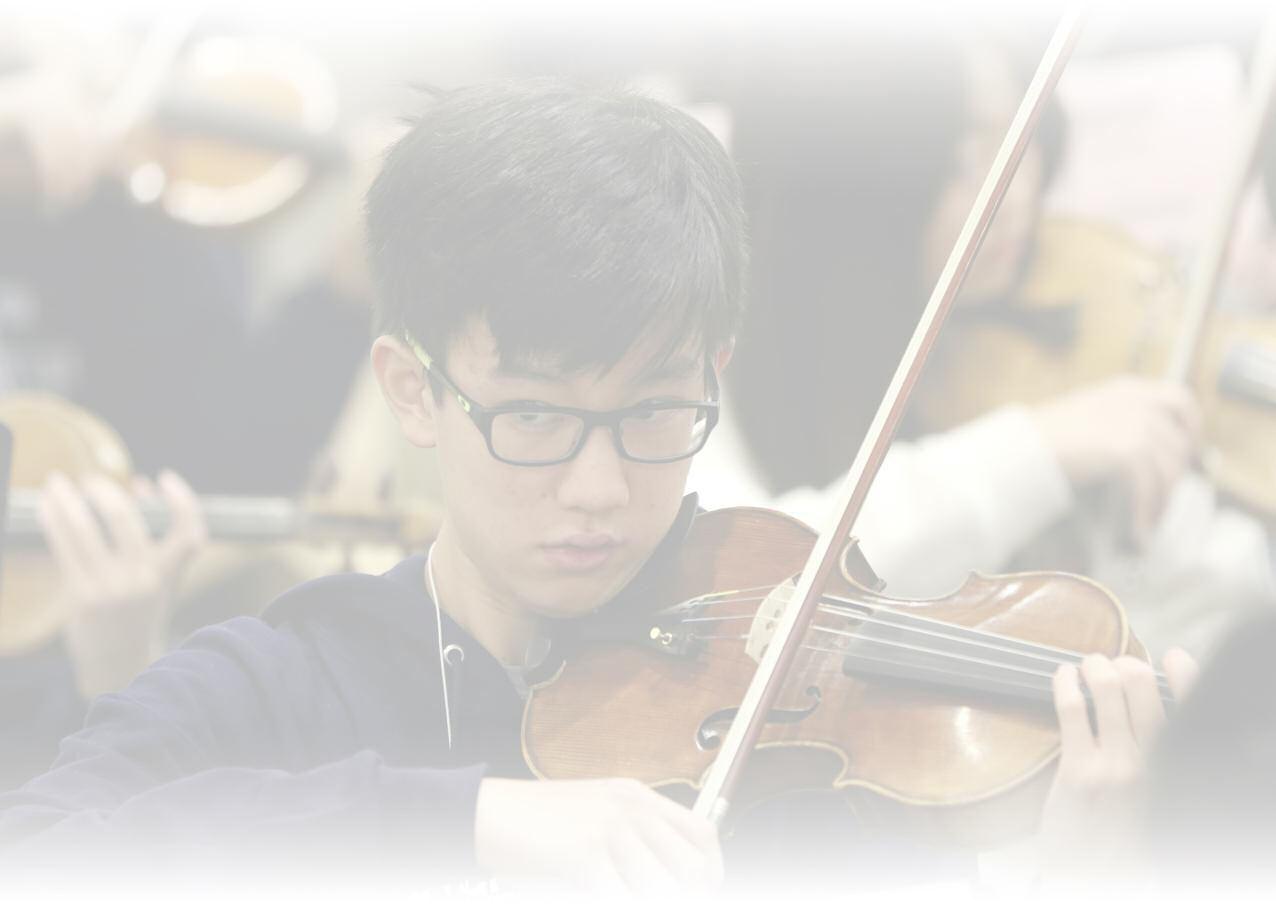
The CMEA Music Industry Leadership Award honors an organization/individual for outstanding leadership in music education. This year, CMEA is pleased to award Ken Lange. Ken Lange was nominated by his son, Scot Lange: “My mother and father started donating instruments to schools at Traver School in Tulare County when their friend Julie was the band director at Traver at the time. Then over the years, it just started to grow out to other schools. Ken and Virginia would travel all over to pawn shops to look for instruments, he would then have them repaired and cleaned up before giving them to the schools that were in need. In addition to many schools, he has helped community music programs as well. Every year he says he is going to slow down (he is 90!). But I never see it. He still has a large inventory of instruments and is still getting them ready to donate to various music programs. This is who my father Ken Lange is...the “Music Man.”
Congratulations, Ken.



The CMEA Illuminating Culture Award goes to Jeff Nevin. Accepting the award on his behalf is Dr. Cynthia McGregor, professor of music and performing arts department chair at Southwestern College, with CMEA Presidentelect John Burn.
Mario Sebastian:
The CMEA Illuminating Culture Award seeks to recognize professionals and programs that integrate the personal and historical cultural perspectives of their students and community through music. It further seeks to recognize programs that use methods that connect student talent while honoring culture and ethnic heritage. The CMEA Illuminating Culture Award goes to Jeff Nevin.
Mr. Nevin holds his bachelor’s, master’s and Ph.D. in music composition, is a professional classical trumpet player who has subbed extensively with the San Diego Symphony and is a lifelong mariachi musician. He founded the Southwestern College Mariachi Program in 1998 and has overseen its growth and success, most notably creating the world’s first college degree in mariachi music (associate’s degree in music: mariachi specialization) in 2004 that inspired several other mariachi degrees created across the U.S.A. and in Mexico since then. Dr. Nevin is the author of the definitive mariachi method book, Mariachi Mastery, which is used by thousands of students across the country to learn mariachi style, as well as the correlating Mariachi Mastery Songbook (released this year), and his first book, Virtuoso Mariachi. Southwestern College’s Mariachi Garibaldi gives many high-profile, professional-level performances every year, and has recently performed in Belgium, France, Germany, Brazil, Russia, China, India, South Korea, as well as countless performances in Mexico and the U.S.A.
Congratulations, Jeff.

Michael D. Stone:
The CMEA Aubrey Penman Retired Music Educator Award honors an individual who has continued to demonstrate influence in developing teachers. This year, CMEA is pleased to award Michael Phenicie with the retired music educator award.
Mr. Phenicie began his teaching career in Northeastern Oregon in 1978, teaching classroom music, band and choir for the Wallowa School District, as well as teaching private lessons on French horn at Eastern Oregon State College. He retired in 2016 after thirty-eight years overall, and thrity-one in the Colusa Unified School District. He has taught concert, jazz and marching bands, show and concert choirs, guitar ensemble, classroom music in grades K–8, directed many musicals, drum corps, and winter guard.
His students performed at solo and ensemble festivals, participated in many honor bands and choirs through the years, and have performed at Carnegie Hall the past six years. The Colusa Music program averaged more than fifty performances per year under his direction.
In February of 2015, he was named outstanding music educator of the year for the Northern Section of the California Music Educators Association. He is currently president of that organization.
Mr. Phenicie has been recognized several times as an outstanding educator of the year in Colusa County, recognized by many civic organizations for service to his community, and even has had an acre of trees planted in his name in the Eldorado National Forest.
Previously active in the California Teachers Association, he has been awarded the Advocate for the Association Award for work in his own local chapter and service center. He was awarded the state WHO Award by CTA in 2003, and in 2012 was one of five finalists in California for the National Education Association Foundation Awards for the Teaching of Excellence.
For the past nine years, Michael and his wife Yvonne, have been coordinating the CMEANorth Section Junior High Honor Band and Select Choir, an event that takes place at Chico State University each January, providing a stimulating experience for hundreds of young musicians in grades six through nine.


Congratulations, Michael.
Scott Hedgecock:
The CMEA/Maynard Moreland Classroom Teacher Award acknowledges excellence in bringing music into the general classroom. The award is presented to Kathy Gayer.
Ms. Gayer has been teaching in the primary grades for over twenty-six years.
She currently teaches T.K. at Sandrini School in the Panama Buena Vista Union School District. Kathy Gayer has been involved in Education Through Music for many years and taught the curriculum all over the world, and in her own classroom every day. She has a following of music and classroom teachers and she spreads the joy of music wherever she goes. She is truly an Ambassador of Music. Kathy is a wife, mother of three, grandmother of eight beautiful, musical children. In her “spare time” she continues to teach Education Through Music in locations around the United States, Canada, and Japan.
Congratulations, Kathy.



Scott Hedgecock:
The Dr. Randi Carp Choral Music Education Scholarship is being presented for the first time this evening. The scholarship is awarded to a graduating high school senior who has elected to pursue music education as their career, and who also embodies the spirit of Randi Carp through their energy and determination to be an educator and their willingness to give back to the profession through service leadership.
The first Dr. Randi Carp Choral Music Education Scholarship goes to Emilio Lopez, from Bakersfield High School.
According to Christopher Borges, choral director at Bakersfield High School, Emilio Lopez embodies all of the characteristics of a future successful music education student. In his nominating statement, Mr. Borges tells us Emilio’s story:
“Emilio did not have any formal training or education in music prior to high school. He started out as an out-of-tune freshman and has developed into a soloist and an all-state honor choir participant. He has taught himself piano using the concepts he has learned in his AP music theory class. Emilio has also served as a leader in his choral music program, currently serving as the president of the Bakersfield High School choirs. He is popular, was voted homecoming king, and participates in the Link Crew, a leadership position that supports incoming
Scott Hedgecock:
The CMEA Collegiate Chapter of the Year (COTY) Award is presented to a NAfME collegiate chapter in California that has presented a successful music program, professional development project, recruitment project, or service project. The COTY is awarded to the collegiate chapter from California State University, Northridge.
The CSUN Chapter developed a one-day collegiate conference, held on their campus, and open to collegiate chapter members from throughout the state. They fundraised and were able to provide the day at no cost to their peers, an important issue to our collegiates today. The CSUN Collegiate Chapter, and their Advisor John Whitener, is dedicated to continuing and growing this project, furthering the CMEA mission goals of leadership, advocacy, membership services, and communications.
freshmen in their transition into high school.
“Emilio does not come from a family with a history of education. His mother came to this country as a farm worker from Mexico and has raised her son to be a compassionate, empathetic, respectful, and successful person. In spite of the absence of his father, the financial burdens of living in poverty and struggling to pay regular bills, as well as learning English as a second language, Emilio continues to impress and astound his teachers, peers, and friends as a truly successful young person. He has demonstrated the fortitude to carry himself beyond anything we might consider ‘challenging’ because he truly believes in himself and his dreams, and he is willing to do the hard work that it takes to fulfill them. In Emilio, his mother’s own dreams for a new life in America are realized, and in Emilio I see the heart of the American Dream.”
Emilio’s response to the question “Why I want to be a choral music educator”:
“Before high school, I did not have a passion. I was always timid and not outgoing, but once freshman year arrived, I was placed in choir.
Since then, I have grown to be the person I am now. I have learned how to communicate to others. I have learned how to discipline myself and to work harder. In choir, the singers have to learn how to be able to sing a song. With that, they also have to communicate with others and discuss any issues they have with themselves or as a section. Being a leader, I have to always know what is going on. I have to be responsible which I would not have learned if not for being in choir. I want to have a choir and teach my future students what music has taught me and what others have showed me. I want to show others how music brings people together, how it lifts one another, how it can teach people skills that can be applied into everyday situations. For me, music has grown into something much more than just a hobby. It is something that continues to grow inside of me; a burning passion that will spread to others. With a wave of my hand, my students will know the meaning and value music has for them.”
Congratulations, Emilio.



Scott Hedgecock:
The CMEA President’s Award honors individuals for their outstanding contributions to the work of CMEA. This year, CMEA is pleased to present mulitiple award winners.
The first recipient is Allen Petrinka
A magna cum laude graduate of UC Santa Barbara, where he studied film and music, Allen Petrinka spent more than twenty years working in regional repertory theater, including serving as the publications director and ultimately publicity and marketing director for the Pacific Conservatory of the Performing Arts at Allan Hancock College in Santa Maria, California. He later joined the Ensemble Theater Project in Santa Barbara where he handled their publicity and wrote musical comedies.
After a successful original musical show at a small Equity-waiver theater in Hollywood, Allen was invited to be a co-producer of a live music variety show on the NPR radio station KCRW in Santa Monica. A freelance graphic artist and photographer, Allen taught a foundation course in graphic design and print production at UCLA Extension for a half dozen years and was the graphic designer and photographer for the Cal Poly Pomona Department of Theater and Dance for more than ten years, where he also wrote two original musicals in full production during their regular season.
Allen has been the art director for CMEA Magazine since 1998, and took over as editor and business manager in 2008.
Allen continues to take our publication to new levels of artistic excellence, and enjoys working with a board that is eager to share the challenges of hard copy publications in a highly technical world.
“One of the reasons I like my job is that it combines writing and editing, graphic design, photography, and music,” he says. “To echo Ira Gershwin: Who could ask for anything more?”
Congratulations, Allen.


Scott Hedgecock:
Russ Sperling is the director of visual and performing arts for San Diego Unified School District. He is responsible for all components of arts education in the state’s second largest school district.
Mr. Sperling previously served three years as visual and performing arts coordinator for the San Diego County Office of Education, and he also served four years as director of visual and performing arts for the Sweetwater Union High School District.
Mr. Sperling currently serves as western division president of the National Association for Music Education (NAfME). He previously served as president of the California Music Educators Association (CMEA), and as president of the Southern Border Section of CMEA. He is the founding president and now board member of the San Diego Winds, a professional wind ensemble. He continues his teaching as the director of the Grossmont College Concert Band.
When CMEA was facing its most serious organizational crisis, Russ knew that we needed a serious reboot. He facilitated our first CMEA Strategic Plan, partnered with the California Arts Project for support, and the new CMEA rose up to be the vital organization it is today.
Mr. Sperling has been instrumental in the creation and facilitation of the San Diego Pride Band, an opportunity for young musicians from the LGBTQ community to come together in a safe and supportive environment. Their appearances in the San Diego Pride Parade are always one of the highlights of the annual event.
Our lives are connected by CMEA. We were introduced to each other by Randi Carp nearly fourteen years ago at a CMEA conference in Sacramento. We quickly developed a friendship that goes beyond that of being colleagues, and the countless hours of work, travel, and service leadership together on behalf of the organization has led us to enjoy referring to each other as “CMEA husbands.”
Russ Sperling is a visionary and one of the true treasures of CMEA.
Congratulations, Russ Sperling.
Scott Hedgecock:
The final recipient is, hopefully, not aware until now that they are receiving this award. I am honored and humbled to present the Presidents Award to Trish Adams.
This “surprise” tonight has been made possible by a special team of people that I’d like to thank: Heather Adams, Tara Adams, Lisa Butts, Jeff Detleffson, Sandra Lewis, Allen Petrinka, and the CMEA Executive Board. It truly does take a village.

Trish Adams serves music education in California at the highest of levels. She is the executive administrator for CMEA, a position she also holds for both CBDA and CODA. Trish is the glue that holds us all together, managing all of the business aspects of the organization, and is one of the most detail oriented and organized people I have ever met. Trish can always be counted on to provide you with “reason why,” and you quickly learn to never question her judgement. At a time when CMEA was in a major restructuring time, and the board had transitioned from being a figurehead to a working board, Trish joined us and quickly steered us on the course we needed to follow.
Russ Sperling introduced me to Trish on a street corner in Fresno. The announcement that she would be joining us had yet to be made, so our outdoors “meeting” was an appropriate and necessary one. I soon learned the outdoors is also a big part of Trish’s life as she is an avid backpacker who loves to leave the world behind and live off the land.
Trish is a dedicated employee. She is the choral accompanist at Hanford West High School, and when they were without a choral director for much of last year, Trish stepped in and served as the director. As she said, “I can’t let the students not have the year they are expecting, they must sing.” It is justly appropriate that Trish works for three of the largest music education organizations in California, as she, too, is a music educator.
Thank you, Trish, for your generousity of spirit, your kindness of heart, and for daily making a difference for all music educators and students in California.
Congratulations, Trish.



John Burn: The CMEA Hall of Fame Award honors a lifetime of extraordinary service and commitment to music education in California. This is CMEA’s highest honor. This year, CMEA is pleased to present two very special award winners.
Dr. Lawrence (Larry) Stoffel. professor of music, is director of bands at California State University, Northridge where he is conductor of the CSUN Wind Ensemble and Wind Symphony. He teaches courses in conducting and music education, as well as being the coordinator of wind studies. Under his leadership, the CSUN Wind Ensemble keeps a high profile with musical endeavors that provide CSUN students with extraordinary performance opportunities.
He holds the degrees doctor of music (Indiana University), master of music (University of Colorado), and both the master of education and bachelor of arts in music (UCLA). His primary mentor in music education was Gerald E. Anderson. He is indebted to the master teachers who guided and nurtured him through student teaching: Doug Hargis, Gary Horimoto, Christopher Schwabe, and Linda A. Anderson. His principal conducting teachers were Ray E. Cramer, Allan McMurray, and Dr. Thomas Lee. Peggi Stoffel, instrumental music teacher at Rancho Pico Junior High School, his wife, continues to have the most positive and profound impact on him. Dr. Stoffel entered the music education profession teaching orchestra and band at John Muir High School in Pasadena and later teaching choir and band at Buena Park High School. Prior to joining the faculty at CSUN in 2004, he served as director of Huskie bands at Northern Illinois University (where he was honored with the Excellence in Undergraduate Teaching Award), director of bands at Eastern Illinois University, and as band director at the University of California, San Diego. Many of his former students have entered the music education profession and others have secured successful performance careers. In all, he has taught in California for nineteen of his ongoing thirty years of teaching music.
Known for his enthusiasm at rehearsals, concerts, and clinics alike, Dr. Stoffel is a recipient of the CMEA John Swain College/University Educator Award. He has recently conducted all-state and festival bands in Virginia, Texas, California, and Alberta, Canada. He is published and lectures on topics pertinent to the profession, from musical interpretation to band transcriptions, from the use of religious music in the public schools to teacher professionalism, from copyright law to band discography. He has recently given clinics and guest conducted at NAfME state music educators conferences in New Jersey, Louisiana, Hawaii, and Germany. Dr. Stoffel is also a former director of the Northshore Concert Band (Chicago).
Congratulations, Larry.

Michael D. Stone:
Dean Hickman served as a secondary instrumental music teacher for the San Diego Unified School District (SDUSD) from 1976–2009. He taught at four high schools and one middle school during his career. He taught band (marching and concert), orchestra, jazz, guitar, and a few years of choir. His groups have performed in Utah, Colorado, Florida, Hawaii, Mexico, Switzerland, and China and have consistently received high ratings at both SCSBOA and CMEA events. He has conducted honor bands for both SDUSD and the Sweetwater Union High School District, and will conduct the CMEA-SBS Middle School Honor Band in the spring of 2018.
During his career, Dean served on boards for CBDA (1999–2005) and CMEA (in the 1980s and from 2006–2017) in capacities that included convention exhibit host, newsletter editor, membership, communication/web hosting, and vice president for band. He is currently the head judge for CMEASBS Festivals, which includes scheduling of festival judges and leading judge training.
In 1995, he was the first recipient of the David Paul Schuchman Award for excellence in music education in SDUSD. He was named the secondary teacher of the year for SDUSD in 2000 and was named a San Diego County teacher of the year for the 2000–2001 school year.
In his retirement, he has stayed active in both teaching and music by serving on the CMEA-SBS Board, by being a BTSA support provider for SDUSD and by conducting the Pomerado Community Band since its founding in 1990.
Congratulations, Dean.
Concluding comments by Scott Hedgecock:
Tonight has been a spectacular celebration of lives. Let’s congratulate all of our CMEA Award Recipients. This concludes the CMEA Awards Gala.
Please continue to visit the CMEF section of our website to learn of ongoing opportunities to provide scholarship support in a variety of areas.
We hope to see you at one of the jazz concerts, and at our all-conference social later this evening. Good night.








Friday, February 16, 2018 • San José Convention







